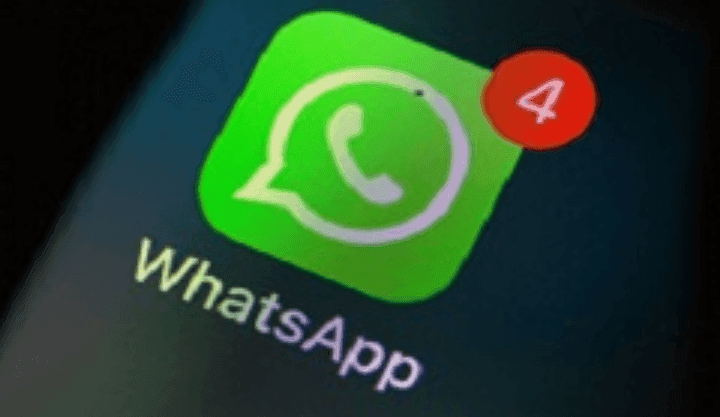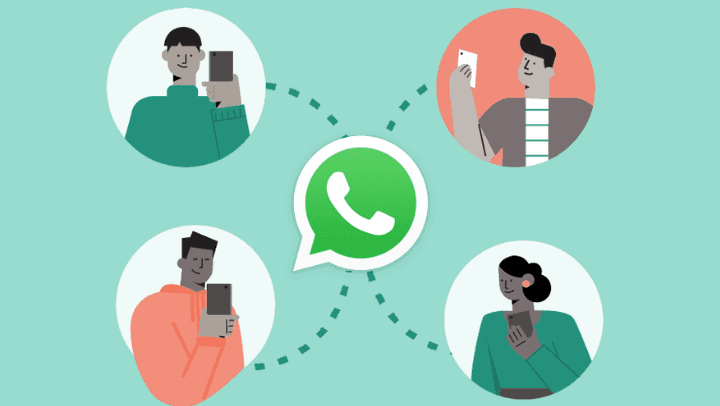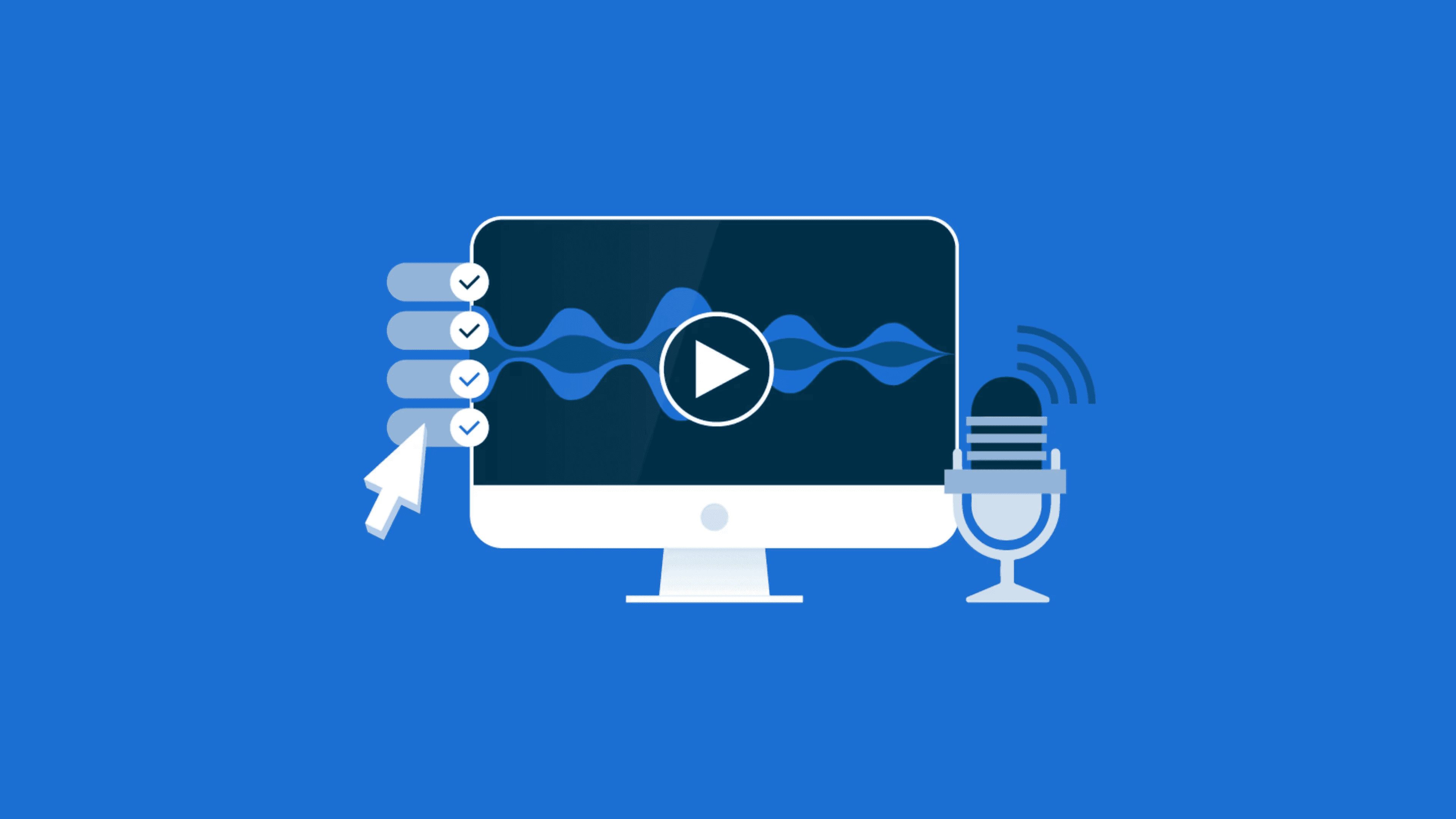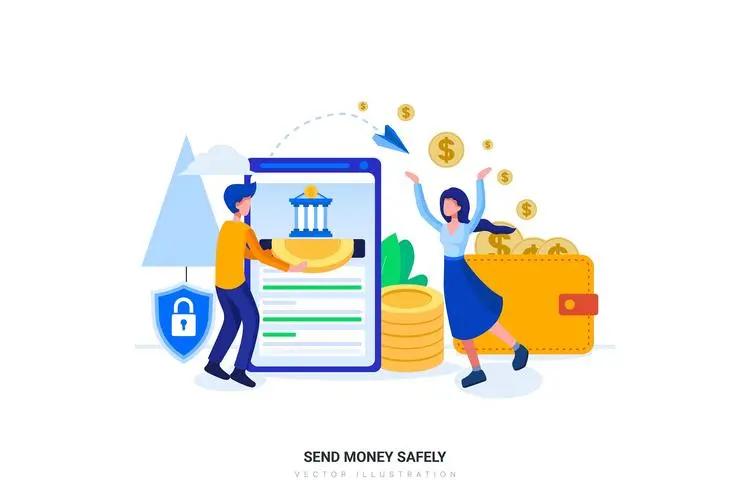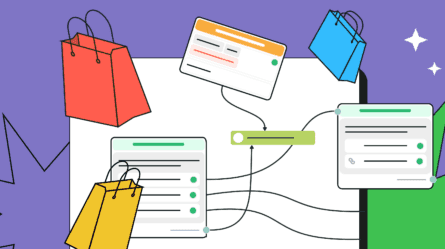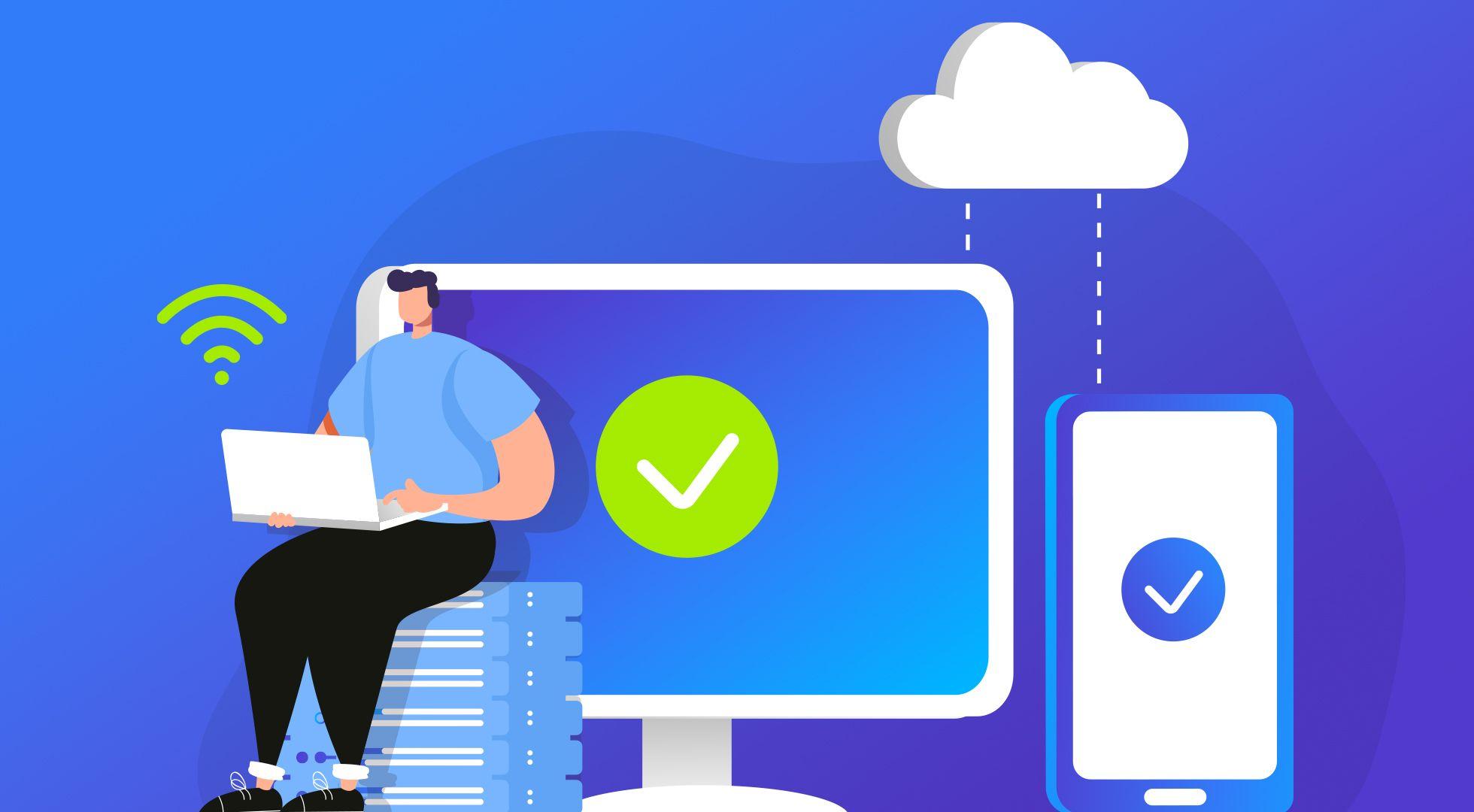应用程序

One-to-one marketing
One-to-one marketing is a strategy that focuses on customer needs to establish strong relationships with consumers and ensure personalized interaction. It enables brands to boost customer loyalty and improve customer lifetime value.
In this article, we’ll explore the advantages, disadvantages, and examples of one-to-one marketing. We’ll also narrate on how to implement this strategy.
Advantages and Disadvantages of One-to-One Marketing
Big sales volume, enhanced customer base, and high customer loyalty are the goals you can attain by undertaking one-to-one marketing and tailoring customized offers. Once you succeed in meeting customer needs, you can improve customer satisfaction. Let’s find out about more benefits you can reap after incorporating this strategy into your business. After establishing personal relationships with customers, you can:
increase customer retention;
boost sales;
successfully implement upselling and cross-selling;
reduce costs on marketing campaigns;
obtain referrals;
improve customer lifetime value;
get free word-of-mouth promoters;
increase ROI;
earn customer trust;
enhance customer base.
However, like any other marketing strategy, one-to-one marketing has its disadvantages you should be aware of. They include:
change in customer preferences will require you to change your personalized offers;
high costs to approach each customer with customized service and product;
the time-consuming character of the strategy.
Now that you know the pros and cons, it’s time to find out how to implement the strategy in your business.
How to implement one-to-one marketing?
Since one-to-one marketing is based on individual relationships with customers, you need to perform several actions to establish good communication. We’ve prepared five mandatory steps to build trusting relationships with your consumers and increase profits. Let’s review them to unveil how to get started.
Gather your team to define the goals. You need to meet with your team to determine your strategy's short-term and long-term goals. You should also discuss the budget and the resources you have to meet customers' personal expectations. After, talk to your sales representatives to identify and analyze customer needs and define the tasks you want to do first. For instance, if your website ensures an excellent user experience and provides elements of personalization, consider implementing new convenient channels for communication with customers. LIKE.TG’s chatbot builder empowers you to connect a chatbot to platforms like Instagram, Telegram, WhatsApp and instantly assist all customers. As a result, consumers can choose a preferred medium to connect with your company.
Collect valuable customer data. At this stage, you need to gather as much customer information as possible. Identify the interests, gender, occupation, needs, preferences, and expectations of your target audience so that you can effectively reach these people. Consider conducting a survey to gather customer feedback and recommendations. As a result, your sales reps will understand consumers’ needs and approach them with the right offers. You can store your customer insights in LIKE.TG’s CRM for free to make sure that your data is entirely secure.
Identify customer needs. Divide your target audience into segments based on their needs to reach them with customized offers. Leverage a CRM to split your customers into groups based on specific parameters. This will help you reach consumers with the right solutions. For instance, your marketers can develop personalized emails for different segments based on their preferences and needs.
Analyze the result. After the campaign launch, you still need to collect customer data. Keep an eye on their interaction with your company to find out their focus of interest. You can gather some additional information by establishing a reward program. Loyalty programs can help you gain valuable insights, build strong relationships with consumers, and encourage them to refer their friends.
Be ready to adjust. You need to continue tracking your customer interactions to find out some more information about them. You can identify the topics they prefer and product upgrades they find useful. If this data requires you to change your approach, you need to adapt. For instance, if you reveal that a customer prefers one communication channel over others, develop a strategy for sales reps on how to interact with this person through this medium.
Now it’s time to have a look at some outstanding examples to get inspired.
One-to-One Marketing Examples
There are many excellent examples of one-to-one marketing strategies used to win customers’ attention. After reviewing the approaches of different companies, you’ll find that you can reach your consumers in different ways.
Personalized email from Webex
Webex invites customers to explore their personalized email prepared for specific audience segments. The company offers clients to join its upcoming webinar. This customized email targets remote workers since the topic of the discussion is “Your Guide to Choosing the Right Devices for Remote Workers.” The webinar will be relevant for people who work online and need to select the right devices for their jobs.
Recommended products from Uber Eats
Uber Eats recommends products based on the cafes and dishes users prefer. For instance, below you can see products picked for you that you might want to order. This way, the company strives to provide personalized offers.
Loyalty program from Sephora
You can often encounter Sephora’s Beauty Insiders on the list of the best loyalty programs. Clients appreciate its program for its personalization index. The company’s three-tiered system of rewards can meet the needs of different audience segments and satisfy every customer. It also rewards its current customers with great gifts for being loyal.
Congrats, now you can develop an excellent one-to-one marketing strategy to build good relationships with customers, increase sales, and revenues. Hope our guide and examples will come in handy when you decide to implement it.

Omnichannel marketing
Omnichannel marketing isa strategy that requires brands to interactwith their audiences across multiple online and offline channels, providing a consistent shopping experience. These channels include social media, websites, apps, email campaigns, chatbots, web push notifications, stores, events, and other means that can guide customers through theirbuyer journey.Omnichannel marketing helps brands gain customer loyalty, establish brand recognition, provide a personalized experience, reduce customer churn, and boost sales.
In this article, we’ll review the importance and benefits of omnichannel marketing and get to know the difference between omnichannel and multichannel strategies. Next, we’llfind out how to create an omnichannel strategy with LIKE.TG and grab some inspiration from our outstanding examples.
Why is omnichannel marketing important?
According to statistics, 87% ofcompanies assume that omnichannel marketing is essential for the overall success of their brands. In today’s digital world, you need multiple touchpoints with your customer to close a deal. You can interact with your target audience in-store, on websites and social media, in chatbots, etc.
With omnichannel marketing, you can focus on customer experience rather than communication channels. This type of marketing makes customers a top priority. This means that companies improve theuser experiencethey provide, personalize their offers, and ensure support in-store and online. As a result, customers are satisfied, and companies increase their customer base,strengthencustomer loyalty, and boost revenue.
Since most people oftensurf several channels before shopping, brands should be ready to ensure a seamless and consistent experienceduring all of the possible touchpoints. Remember, a positive experience reduces churn and increases loyalty.
Now that you know the reasons for implementing the technique, it’s time to figure out its benefits.
Benefits of an Omnichannel Marketing Strategy
Omnichannel marketing is gaining popularity due to the many advantages it brings to both shoppers and sellers. 50% of customers want to have the possibility to purchase online and pick up in-store. Let’s review the pros customers can obtain if a brand implementsan omnichannel marketing strategy. They include:
seamless customer experience;
additional shoppingoptions;
more waysto reach a company and solve problems;
convenient shopping;
amazing in-store experience;
personalized services;
lesstime spent trying to contact a company.
More and more companies leverage omnichannel marketing for a reason. With this strategy, your business can get the following benefits:
brand recognition;
reduced churn;
customer loyalty;
excellent customer support;
high revenue;
more purchases and closed deals;
improved customer lifetime value;
scaled business growth;
bettercustomer experience;
new audience segments;
higher customer engagement.
When you provide a seamless and convenient shoppingexperience for your customers across multiple channels, you’ll get many benefits in return. Let’s proceed to the next section to unveil the difference between omnichannel and multichannel marketing.
Omnichannel Marketing vs. Multichannel Marketing
Providing a best-in-class experience with a brand that communicates the necessary information to buyers requires time and the right strategy. Marketers need to be creative tostrike a chord with shoppers. To choosea strategy, you need to know the key difference between omnichannel and multichannel marketing. We’ll now review each of them in detail to understand it.
Omnichannel marketing is a strategywhere entrepreneurs put customers at the heart of their businesses. Brands use multiple channels and personalized messaging to effectively lead prospectsdown the sales funnel. The strategy implies providing customers with a seamless and consistent experience. To attain this goal, brands use different channels. For example, users can see the items they have already viewed ona website. Customers can encounter ads for these products on Instagram, Facebook, other websites, etc.
Multichannel marketing is a strategy that entails a brand delivering the same message across several channels. A brand shares the same content, promotions, offers, and news on all channels without providing a consistent experience to leadsand customers.
So, omnichannel marketing aims at ensuring a seamless and consistent experience that helps lead a prospect downyour sales funnel. In contrast, multichannel marketing aims to expand a brand’s reach and attractnew audiences.
The difference is clear now, so it’s time to jump into the next section to discover how LIKE.TG can help you create an omnichannel strategy for your brand.
Howdo you create an omnichannel marketing strategy with LIKE.TG?
Let’s now imagine that you have a new profitable business — acompany thatproduces soy candles. You are thinking about conducting workshops to teach people how to make such candles. Now you need to develop an omnichannel strategy to lead customers throughyour sales funnel smoothly. Let’s review different tools you can leverage.
You can promote your candle-makingworkshop via paid ads on Instagram with CTAsthat bring potential participants to your landing page. LIKE.TG allows you to create a landing pagewithin 15 minutes without coding. On the landing page, users cangive their contact informationto participate in your classes and giveaway. The winner will get three homemade wax candles for free.
In the first email, you should thank subscribers for signing up and welcome them to the upcomingworkshop. The second email is to provide subscribers with the workshop agenda and information about their teacher. The third email is to remind participantsabout the workshop, free guides, and a 20% discount they can get after they go through a short survey in Facebook Messenger.
In the last email, you’ll promote the opportunity to receive a 20% discount for the nextworkshop if participants answer all questions in your Facebook Messenger chatbot. In a nutshell, you’ll need a bulk email service, chatbot and landing page builder, and Instagram ads to promote your event.
Before promoting your lessonsvia email campaigns, chatbots, and a landing page, you need to register with LIKE.TG. It takes a couple of minutes to create a new account.
Create an email campaign
The first step is to create a new mailing list where you’ll keepthe email addresses you gather using asubscription formon your landing page. To do it,click “New mailing list.” Name and save your mailing list— you can editit whenever you need.
The second step is to prepare a flow offouremails.LIKE.TG allows you to design your email from scratch or choose one of the existing free email templates. To create an automated email flow, go to “Automations” and click “Create new automation.”
Then,type in your automation name and select your sender email address and name and unsubscribe form language. Don’t forget to save the changes.
Once you click “Apply,” you’ll beredirected to the flow editor. Here, you can create an email flow anddevelop chatbotsfor different social media platforms.
Tosend a post-registration email to subscribers automatically, set upyour flow start. Click the “Flow start” element and thenselect “Add subscriber” in the Settings anda mailing list for this particular email campaign.
Now you need to drag the “Email” element and connect it to the “Flow start” element. Afterward, you’llneed tomanage the send-out. Select “Right away,”add your email subject line and preheader, and select the necessary email template. Edit the template to your liking. It will be the first email your subscribers receive.
In the second email, you can talk about the agenda and teacher in more detail. The third email should remind your participantsabout the upcoming candle-making class and offer freeuseful materials for everyone who joins theworkshop.
Once the workshop is over, askyour participants about their experience in the last email. Invite them to do it on Facebook Messenger. Once they answer the questions, they’ll have a 20% discount for the nextworkshop.
The number of emails you send depends on the event and strategy. Theprimary aim is to hook more people, provide a consistent experience, and encourage them to join.
Create a chatbot
With LIKE.TG, you can set upTelegram, WhatsApp, Instagram, and Facebook Messengerchatbots. So let’s take advantage of this feature and create a chatbot for your candle-making class. This chatbot will help you gather feedback from your participants andgrant them a 20% discount for the upcoming scented soy candles workshop.
Go to the “Chatbots” tab. Click “Manage bots” andthen “Sign in with Facebook.”
Connect your pageandsubscribe to your chatbot.
To send a message to users right after they subscribe, click “Create a new trigger”and select the “After subscription” trigger type. Save the changes by clicking “Add.”
Now let’s create a message flow. It will help collect feedback from participants and provide them with a 20% discount foryour next workshop. Once you add a trigger, click the “Create a flow” button.
Usechatbot builder elementsto build a flow of messages you want to send to your participants. You can easily add chatbot messages with quick answers.
Below, you can see a flow of messages from the candle-making workshop team asking participants about their experience in Facebook Messenger. In the chatbot, you ask participants whether they enjoyed the event and would like to participate in the next workshop. People can answerusing the “yes” and “no” quick answers. Once you have all the necessary information,grant your participants a 20% discount on the next workshop.
After you finish, check if everything works properly. Now you can move on to creating your landing page.
Landing page
To design a landing page,goto the “Landing pages” tab and click “Create a website” and then “Mini page.”
You can create a landing page from scratch or use the professional templates available. Let’schoose a pre-made one for your candle-makingworkshop and edit it a little— now we have a sharp-looking landing page.
Paid Instagram ads
To get started with ads on Instagram, go tothe “Advertising on Instagram” website and click “Create an Ad.”
Once you click the button, you’ll be redirected to Facebook Ads Manager. After you read the non-discrimination policy, click “I Accept.”
The next step is to select the objective of your future campaign.
Fill inyour campaign name, select special ad categories, and proceed to the next step after clicking “Next.”
The next step is to set up the budget, audience, destination, and duration of your ad.
Type inyour ad name and select an identity and format. Once everything is ready, publish your sponsored ad by clicking “Publish.”
When your ad is approved, it will be visible to your subscribers and leads.
Now that you know how to create an omnichannel strategy, let’s take a closer look at how well-established companies launch their omnichannel marketing campaigns.
Examples of Omnichannel Marketing Campaigns
There are many amazing examples of omnichannel brandsthat provide consumers with the best experience. We’ll review different companies’ campaigns to see how the strategy works. So, let’s grab some inspiration.
Starbucks Rewards
The famous coffeehouse chain invites its customers to make use of its app. Since people now use mostly their phones to order something, the brand created a mobile app with multiple features. Customers can pre-order and pay at certain locations.
You can pay for your coffee with a credit card, cash, or a special Starbucks Card. This way, you no longer need to wait in a long queue after a hard day at work just to get a cup of your favorite coffee. Customers can orderin advance and enjoy their evening with coffee. Moreover, they can even be rewarded forchoosing the brand’s beverages.
Amazon
Amazon synchronizes customers’ carts in the app and websiteif they are signed inand offers supportusing clients’ preferred communication channels.AmazonPrime members experience convenience when shopping with Amazon, as they can use anymedium to access the benefits of this membership.
Spotify
Spotify isn’t inferior to Amazon in its user experience. The brand has its own approach to fulfilling listeners’ needs and ensuring the convenienceof using the streaming service on different devices. Since people can use a web app, a desktop app, and a mobile app to listen to their favorite songs, the serviceimplements synchronization features. It means that a song a user listens to at the moment on a mobile deviceis also displayedonthe desktop app version as well.
In a nutshell, you are the one to decide whether an omnichannel strategy is a good fit for your company. However, you should always remember that with personalized messages and a seamless user experience, you’ll always be one step ahead of your competitors and one step closer to your audience.

On-page optimization
On-page optimization is an integral part of any SEO strategy. It implies optimizing your site content to rank higher on a search engine results page (SERP). The goal of this practice is to create highly relevant and valuable content that meets users’ needs.
In this article, we’ll explain why on-page optimization is essential, consider its elements, and share some useful tips.
Why is on-page optimization important?
According to BrightEdge, 53.3% of all site traffic comes from organic search. This makes business owners pay special attention to their on-page optimization since it plays a crucial role in understanding a user’s intent.
The first reason you should consider on-page optimization is that it helps you realize what your target customers want. By analyzing the keywords consumers use in your industry, you will determine which queries they implement for navigational, informational, or shopping intent.
Secondly, on-page optimization allows you to provide your users with valuable content that provides answers to their questions. Knowing their search queries, you can produce different types and formats of content that will fit users with various needs. As a result, you can grow your authority and credibility.
Thirdly, search engines reward sites that people like. The more users click on your links in SERPs, the higher your page will rank. Hence, your domain rate will increase.
Last but not least, occupying the highest positions in SERPs increases your conversions since people tend to trust the first three search results. Hence, you’ll get more salesif they manage to find what they are looking for on your page.
To benefit from on-page optimization, you should know its core elements.
Key Elements of On-Page Optimization
In this section, we’ll uncover the main areas you need to work on to implement on-page optimization.
Page content. This is a crucial element since search engines check everything you publish. Your content should be unique and high-quality. Google uses the E-A-T framework to assess web pages. E — expertise, A — authoritativeness, T — trustworthiness. Although there’s a need to optimize your content for both users and robots, Google wants site owners to create customer-oriented pages that meet customers’ needs.
Title tag and meta description. They are HTML tags. When a user types a certain search query and sees a SERP, title and meta description are the first thing they pay attention to. Their main goal is to drive customer engagement and motivate people to click the link. With the right title and meta description, you can significantly increase your page CTR. Therefore, they should be relevant to your page content.
Heading tags. They are responsible for the logical structure of your page content. There are six heading tags: H1, H2, H3, etc., where H1 is the most important and H6 is the least important. H1 is the title of your page, so it should be informative and relevant to a user’s search query. H2-H6 are used to highlight your headings and subheadings. Headings help readers comprehend the structure of your article betterand navigate to the necessary section.
Internal links. To improve your website engagement, don’t forget to interlink relevant articles. This will help your readers learn all the necessary information in a logical order, step by step. When adding a link, pay special attention to your anchor text. To drive user attention, it should be relevant to its destination page and include corresponding keywords.
These are the main elements of on-page optimization. Now it’s time to consider some tips that will help you master it.
How toOptimize Your Content for On-PageSEO
Optimize title tag and meta description
Create high-quality content
Optimize images
Take care of internal linking
Use SEO-friendly URLs
Create categories and tags
Since on-page optimization requires following some practices to meet the needs of users and search engine algorithms, we’ll share some tips for you to create a killer SEO strategy. Title and meta description are the first elements a reader sees when googling, so we’ll start with that.
Optimize title tag and meta description
Their goal is to attract user attention and tell them that this page provides answers to their questions. Although these elements don’t influence your ranking much, we advise you to optimize them for better performance. For this purpose, includea primary keyword in both your title tag and meta description. Use modifiers to inform clients about what exactly they will see if they click on your link, for example, a checklist, guide, case study, video, infographics, etc. This way, you will increase your chances of catching their attention.
Keep user intent in mind. If it’s informational, use a corresponding modifier, for example, “What is Email Marketing.” Take into account the length of both tags. Google is constantly updating its algorithms, so you need to check them. To stay on the safe side, avoid putting overly long titles and descriptions since they will look poor on a SERP. Make your meta description support the title. Use active voice and keywords, and motivate users to followyour link.
You can see an example of an optimized title tag and meta description below. Both elements include the main keywords (SEO, search engine optimization), title tag modifier (a simple step-by-step guide), and meta description that encourage users to follow the link to learn what to do for Google to like your content.
Create high-quality content
High-quality content is about producing original, unique, expert articles. This will help you improve user experience, meet their intent, decrease bounce rate, and boost CTR and conversions accordingly.
If you aim to create valuable content, you can start guest blogging. Find experts in your niche and offer them to write articles that will help your audience solve their problems. Be ready to update your content regularlyto keep it fresh and provide new strategies and techniques. For your content to look visually appealing, mind paragraphing, numbered and bulleted lists, tables, images, and screenshots.
Use keywords organically. Define your primary and secondary keywords to use them naturally when writing your piece of content. Avoid stuffing your page with keywords because Google can penalize you for that.
Optimize images
Remember to create unique images and avoid using stock photos since they bring little to no value to a user. Remember that the goal of adding images is not only to make your page more visually appealing but also informative. Each image should tell its story, help reveal a certain topic, and be helpful. Compress images before publishing them since they can weigh too much and load for ages when users open your page.
Help Google understand what your image is about. For this purpose, create descriptive names instead of IMG_123456 since robots don’t understand this. Always write ALT texts for your images. Sometimes browsers can’t properly render images or fail to load, so having ALT texts is your airbag. It’s useful for both readers and robots. People with disabilities can use their screen readers to listen to the text describing an image. Therefore, if an image doesn’t render,your ALT text can explain what this or that image depicts. Besides, having ALT texts can help you rank higher because it’s associated with images.
In addition, we advise you to pay special attention to the structure of your email files. Don’t place all your images into one folder. Create separate folders for different categories. For example, if you have an eCommerce business, your files can include “Men,” “Women,” and subfolders “Jeans,” “Dresses,” “Swimsuit,” etc.
Take care of internal linking
We’ve already mentioned internal linking. It helps users navigate through your site and understand a particular topic better while alsoallowing you to boost your new pages or pages that have little traffic. For this purpose, create a list of your most authoritative site pages that perform well and choose those that are related to the one that needs promotion. Then, place these links to your low-authoritative pages and include relevant anchor text. This way, you’ll share the value of your best page.
Check out an example of internal linking from LIKE.TG. In our glossary, we define internet marketing terms and consider the most important issues. In our blog, we cover the same topics but more in-depth. We often advise our readers to study the topic better in our blog.
Use SEO-friendly URLs
URLs should be concise, clear, and informative. For this purpose, include your primary keyword in the URL, make it reflect the title of your page, and avoid using special characters and unnecessary words. These words can make your URL too long, which is a bad SEO practice. Apart from that, remember to omit conjunctions, prepositions, and articles.
Create categories and tags
If you have a blog and cover different topics, we advise you to develop its structure. It will help readers navigate through your blog and enable search engines to understand your topics. Group all your articles by categories and tags.
Congrats, now you know pretty much everything about on-page optimization and are ready to get started. With this list of tips at hand, you can create outstanding content that will meet your readers’ intents and tell search engines that it deserves high rankings.
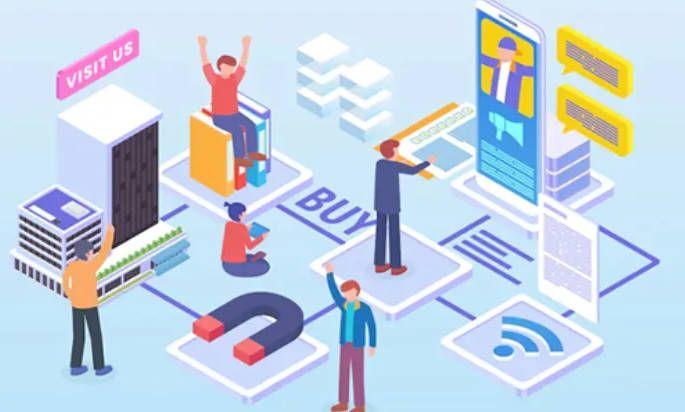
On-target earnings
On-target earnings (OTE) are compensations employees expect to receive from their companies once they meet a specific quota and match the required performance. These are sums that consist of a base salary and sales commissions.
In this article, we’ll unveil the benefits of on-target earnings and uncover how to estimate them.
Benefits of On-Target Earnings
Sales representatives receive their salaries using two options: a basic salary covering sales and on-target earnings, which means you get sales commissions to your primary salary. Employees always expect a high salary from companies. However, different businesses have requirements, which are usually strict. They require new hires to match their performance, demonstrate professionalism, and meet their projected business goals. Every company needs an on-target strategy to shape a team of professional sales reps and encourage them to bring excellent results. Companies should consider implementing an on-target earnings model since it sets revenue expectations and encourages employees to work better to get good salaries. As a result, an employer reaches its company objectives while an employee gets a high salary.
Sales managers use OTE as a reference point which indicates whether sales reps should bring more effort. It can be the speed of work, the number of sales, or the number of prospects reached.
OTE is widely used as a recruiting tool. Recruiters strive to get the best talents by showing on-target earnings numbers. Moreover, it can help determine whether a candidate can reach such results and is ready to work towards attaining these goals.
On-target earnings enable company departments to align their efforts toward achieving company goals. They can focus on profits and expenses. If employees manage to do it, they receive good commissions.
Now that you know the advantages of OTE, let’s find out how to estimate on-target earnings for your business.
How to calculate on-target earnings?
Since on-target earning for the sales team consists of a base salary and commission from the sold items, the OTE formula is calculated based on these two indicators. For the executive team, you need to figure out the base salary and bonuses these employees get after reaching specific brand objectives. We’ll uncover the calculations below to set OTE for your sales or executive team.
Identify the base salary. To determine the right salary for your employees, you need to look through the average annual base salary for this position. It will help you choose the appropriate sum of money. When setting the salary, keep in mind that you should provide a salary enough for living. Sometimes sales reps can’t meet expectations despite all their effort.
Calculate the sales quota you want your sales reps to reach. The next step is determining the sales quota you want for your company. Make sure that it’s attainable for your sales representatives. Your quota should be approximately 6-8 times higher than your on-target earnings. It can be based on the previous experience of your reps, but you still need to challenge them to grow and bring profit to your business.
Set your brand’s projected objectives. If you need to estimate OTE for your executive team, take care of the bonus system. It depends on the projected business goals. You need to determine them first. For example, you can create a task to redesign a landing page or train new hires. After setting the goals, you need to think of the difficulty level of these tasks and determine the time frame. Once you finish with these points, you’ll be able to identify the right figure for the bonus.
Add up your base salary and commission. The last step implies adding up a base salary and sales commission to calculate OTE for the sales team. If you want to estimate on-target earnings for the executive team, you should add base salary and bonus amount. Say a sales representative in the New Company receives $28,000 as an annual base salary. This person has a sales commission of 1.2% with a target of $100,000 per month. If the sales rep succeeds in hitting the target, this person will receive an additional $1,200 per month. After calculating, we can figure out that sales reps at New Company get $14,400 of commission annually. To estimate the OTE, we should add the base salary and commission per year. OTE = $28,000 + $14,400 = $42400.
Congrats, now you know what on-target earnings are and why they are essential. Hope that our guide will allow you to calculate these figures for your company.
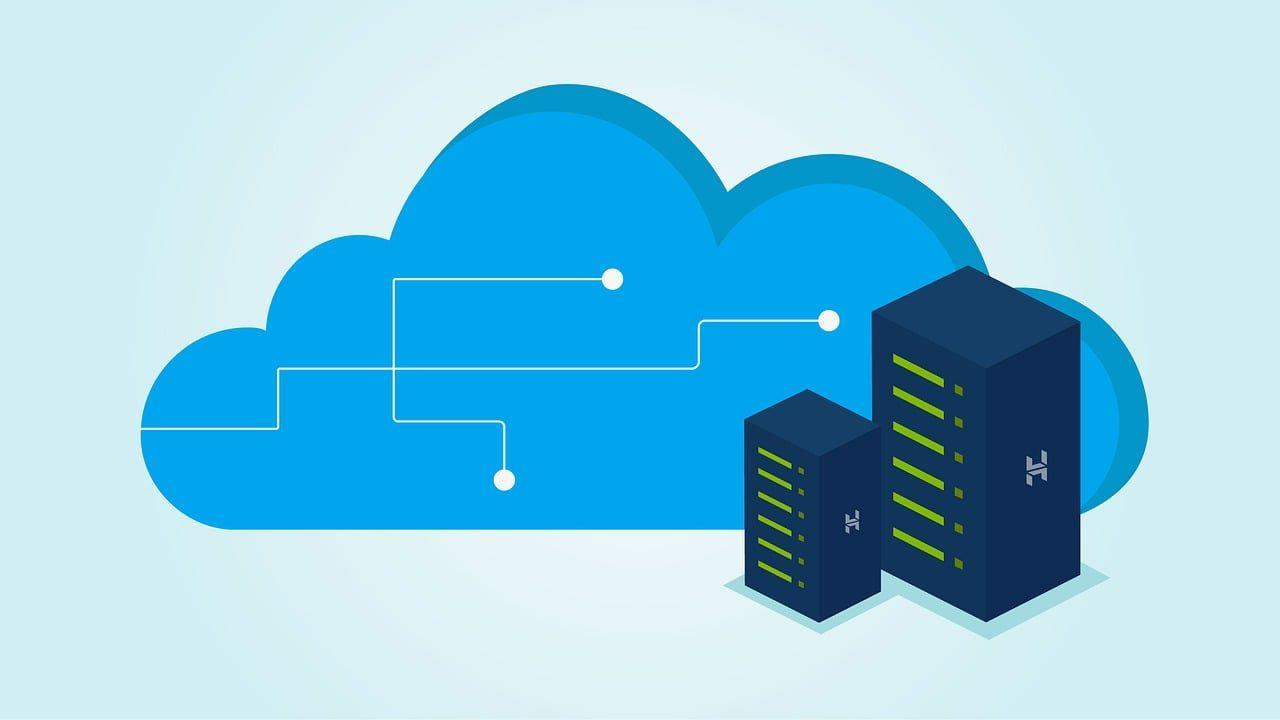
Off-page optimization
Off-page optimization is an essential part of your SEO strategy. It implies using several techniques outside your site to improve its ranking on a search engine results page (SERP). These techniques include creating valuable backlinks, commenting on blogs, joining forum discussions, guest posting, etc.
In this article, we’ll explain why off-page optimization matters and share some effective techniques to improve your SEO strategy.
Why is off-page optimization important?
Building high-quality backlinks goes a long way when it comes to creating valuable content. None of these strategies can be underrated. Search engines use a site’s backlinks to assess its quality and authority. The more links from authoritative resources your site has, the higher its position on a SERP.
You can use Ahrefs or Moz to discover your Domain Authority (a score from 0-100). Mind that search engines do not use this score to rank your site, but it provides you with information on your ranking potential. If it’s low, you should work on both on-pageand off-page SEO.
The logic behind off-page optimization for search engines is the following:
If an authoritative site provides valuable content links to your site, it means that your site is worth it. Otherwise, this linking resource won’t put its reputation on the line since it shares its power and authority with you. Then, a search engine algorithm takes into account the relation between the content of the site that places a link and your site. It analyzes the number and quality of other links on the linking page, anchor text, trustworthiness, and popularity of the linking site to judge whether your site is worth high rankings.
Now that you know that off-page optimization is as important as on-page SEO, it’s time to learn some tips and tricks to improve your rankings.
Off-Page Optimization Techniques
Check out your backlink profile
Build high-quality backlinks
Pay special attention to your social media
Start guest posting
Try to join local listings
Communicate with potential leads on forums
Make use of broken link-building tactic
In this section, we’ll uncover the steps you should take to constantly improve your rankings with the help of off-page optimization. We’ll also cover the channels you can use for better performance. Let’s start with evaluating your current position.
Check out your backlink profile.First and foremost, you need to have a clear picture of your situation. For this purpose, you can use various toolslike Ahrefs, Moz, Screaming Frog, or SEMrush. With their help, you’ll find out the total number of backlinks to your site, referring domains, and pages best by links, anchors, and your Domain Rate (Domain Authority). The latter will help you compare your backlink profile to your competitors’ one and plan your strategy accordingly.
Build high-quality backlinks. Remember that quality beats quantity. You won’t rank high if new sites with poor authority link to yours. You’ll see tangible results if you get links from sites with high Domain Rates, organic search traffic, related topics, and relevant links. Note that you should never buy links since Google penalizes this.
Pay special attention to your social media.Even though social media shares are not a ranking factor, and backlinks from social networks don’t influence your SEO, you can’t ignore this powerful channel. You can increase your rankings with branded queries. Besides, social media are kind of separate search engines. People go to social networks to communicate with a brand, find answers to their questions, and see some behind-the-scenes. Therefore, consider providing a cohesive user experience and support brand consistency across all channels.
Start guest posting. Look for companies that are similar to yours so that their target audiences may need your solution. Offer them cooperation: you’ll write a valuable and expert piece of content, and they publish it on their blog. Apart from benefiting from their authoritative link, this will help you increase your brand awareness and outreach, drive referral traffic from this site, and bring in new leads. However, you should be ready to provide this site with unique and highly relevant content.
Try to join local listings.A local listing is a directory a user sees when googling “...near me/nearby”. Being listed on a popular directory such as Foursquare, for example, provides you with a valuable backlink from an authoritative source and new leads.
Communicate with potential leads on forums. This tip may seem outdated in case you’re going to spam each discussion with your links. Approach forums differently. Thousands of people use Reddit and Quora to find answers to their questions and talk to experts and like-minded people. Hence, why should you miss this opportunity to build a community and get some backlinks? Look through popular discussions where you can share your expert knowledge and experience to help people.
Make use of broken link building. Broken links harm sites a lot, but you can use them to your advantage. Find your competitors’ broken links, no matter whether these are links to your site or not, inform the site owners about them, and offer to replace them with relevant links to your site. This is a win-win for both since you’ll help this site reduce the number of 404, improve the user experience it provides, and benefit from getting a valuable backlink.
Now you can try the strategy you like the most or combine them for better effectiveness and increased ranking. And don’t forget about the power of on-page optimization.
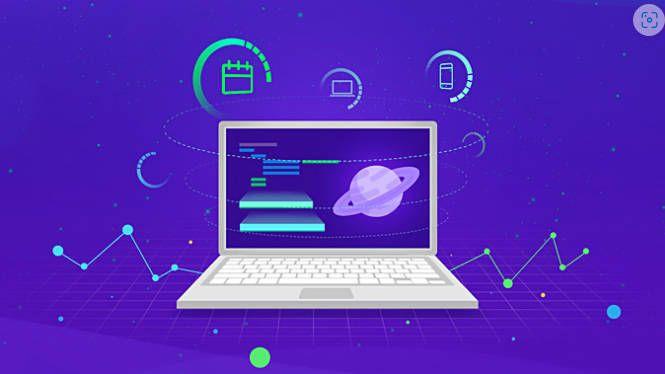
Nudge marketing
Nudge marketing is a selling technique that requiresmanipulating customer behavior to close more deals. Marketers use psychological insights to speed upclients’ decision-making process.
In this article, we’ll explainhow nudge marketing works, share some effective techniques, and provide inspiring examples. Stay tuned!
How does nudge marketing work?
Nudge marketing is about discovering psychological mechanisms that influence customers’ purchasing decisions. Nudge is a motivator that makes people buy. So, nudge marketing aims to transform this stressful decision-making process into a pleasant customer experience. Since leads often feel uncomfortablewhen making adecision, hesitate, and look for more reasons to buy, marketers use this approach to provide them with these reasons at the right time and in therightplace.
To understandhow nudge marketing works, remember the last time you bought fries or a cup of coffee at McDonald’s. In both situations, clients choose whether to buy a small, medium, or large portion. This is a win-win for both parties because customers have a choice and often prefer the large portion since the price difference between medium and large portionsis not that tangible. As a result, they make seemingly independent decisions and spend more money, and both parties are satisfied.
Some people consider nudge marketing manipulative, which can be debated. Essentially, nudges are not clickbaitor spam. They appeal to consumers’ psychology, interests, preferences, motivators, buying habits, and values. So, when implementing nudge marketing, brands consider previous customers’ experiences and needs, whichallows us to call this approach personalized. Brands using nudges manage to make the buying process less stressful for clients, create personalized and targeted offers, and improve their sales funnel.
To make this strategy work for your business, we’ll share some practical ideas that will help you increase sales.
Nudge Marketing Techniques
Some of the ideasmay be familiar to you since these are well-known tips that help convert more site visitors into customers. You can analyze your conversion rate,single out the strategies that helped you convert more leads, and implement them in your nudge marketing campaign.
FOMO
Each of us has once missed some profitable opportunity— whether it was a missed 50% discount on a sweater or a lack of seats foranevent, it sticks in our mind. Next time wesee a time-limited offer, our subconscious reminds us of this painful experience. As a result,we are afraid of missing another valuable deal and make impulse purchases.
Marketers are familiar with this phenomenon and use it quite effectively to drive more sales.Take a look at an example of an email campaign promoting a hot deal with the help of FOMO.
Social Proof
This is another powerful marketing technique that encourages people to take action. Let’s saythat you are hesitating about which restaurant to visit, and you see that one of them has a long queue. You will probably consider it the best choice since people have already been there and trust it.
Social proof means that people lookup to companies’ existingclients’ orthought leaders’ opinions and make decisions accordingly. They trust the choice of authoritative people. Marketers use this strategy to drive leads’attention and convert them into clients. Below you can see how a company encourages users toleverage their services with the help of social proof.
Product Labels
Placing a functional product label isthe new black today. Brands follow the most popular trends and use them in their selling techniques to increase revenue. They enhance product characteristics with unique features people can’t ignore. Eco-awareness and recycling are gaining momentum today, so brands don’t miss the opportunity to showthat they care about our planet.
The North Face knows something about nudge marketing and uses this technique to promote the company’s clothes from recycled materials. This way, the brand positions itself as eco-aware and helps customers feel that they bring value by buying their goods.
Decoy Effect
This marketing technique is used by companies that providemultiple versions of the same product or several pricing plans. The goal is to persuade a customer to buy the most expensive product bypresenting other items’features as less valuable in comparison to it. This way, customers are sure that this most expensive item is the best choice. Examples of this phenomenon includes selling small, medium, and large portions of coffee or fries, where the difference between medium and largeportions is insignificant.
Spotify provides a comparison table for users to choose the best fit for them. The most expensive optionimmediately strikesthe eye with itslong list of featuresand little price difference.
Now that you know the most effectivenudge marketing techniques, we’ll share some inspiring examples that stand out from the crowd.
Examples of Nudge Marketing
We’ll provide online and offline examples of nudge marketing for you to see that this technique can be used in different industries and formats.
Misguided encourages users to buya dress with a discount by informing them that several clients have already purchased it during the last 48 hours. This way, a brand creates scarcityusingcustomers’fear of missing out.
Volkswagen ran an experiment in 2009. The brand was looking for a way to make more peopletake the stairs instead of the elevator or escalator. They created a fun piano staircase, which made66% ofpeoplechoose thestairs.
Hubbub, anenvironmental organization, used a nudge marketing approach to reduce cigarette litter.The company placed Ballot Bins to ask people about trendy events and encourage them to keep the streets clean. This marketing campaign offered people to choose the best football player in the world.
Congrats, now you know how nudge marketing works, have some effective techniques at hand, and can grabsome inspiration from the examples above, so create your perfect campaign and blow up sales!

Nonprofit email marketing
Nonprofit email marketing is a marketing approach that involves the communication of non-profit organizations (NPO) with their donors and volunteers through email campaigns. It helps communicate with the target audience, update it on serious issues and impact, and share mission and values.
In this article, we’ll unveil the importance of email marketing for nonprofit organizations and teach you how to write converting emails. We’ll also review 10 best practices and some great examples for nonprofits.
Why is email marketing important for nonprofits?
The existence of nonprofit organizations such as churches, public charities, public clinics and hospitals, and volunteer services organizations depends heavily on their donors. That’s why finding the best ways to share their purpose, reach the target audience, and encourage them to help is crucial. Nonprofits use different approaches, including email marketing, to receive funding from individuals, corporations, and government institutions. It’s a cost-effective way to interact with donors and make them act.
As of 2022, there are around 4.3 billion email users. It indicates that many people around the world use their inboxes to send emails and receive updates from businesses and NPOs. Moreover, according to statistics, 99% of these people check their emails at least once a day.
Email marketing can help attain several marketing goals for charity and nonprofit organizations. First, once potential donors subscribe to your email newsletter, you can thank them for joining your mailing list. After that, you can introduce your organization to the target audience and tell these people more about your mission and values. Secondly, when having direct access to the audience at any time, you can interact with donors through emails and update them on important projects.
Thirdly, besides being a source of information, emails can encourage donors to act and provide help when needed. For instance, if you need to close an important fundraiser, send out an email campaign containing all the necessary information for donors and include a call to action. It will allow them to access a link where they can donate. Finally, building trust is also essential and possible with email marketing.
Now that the benefits of email marketing for nonprofits are clear. Let’s find out how to write a converting email. The information in the following section will empower you with the knowledge that encourages people to make donations and support your organization’s existence.
How to write a converting email for nonprofits?
Writing a good email is essential for all, including nonprofit organizations, since it can influence donors’ decisions. To do everything right, we offer you to check out the tips below and apply them to your email campaigns. Let’s dig in!
Use email marketing service. Email marketing service is a platform that uses software to create and send professional email campaigns to a big number of subscribers. With this platform, you can send bulk email campaigns, use templates to create professional emails, segment your mailing list, personalize email campaigns, schedule the sending of emails, and send relevant emails to potential customers. A good service with an excellent reputation enables you to improve your email deliverability and open rates. Moreover, a platform with automation features allows you to send emails on autopilot based on customer behavior. For instance, you can send a welcome email when a prospect subscribes to your newsletter. LIKE.TG is an example of such a service that empowers you to create quality email campaigns for free.
Create an outstanding subject line. The subject line is the first thing everyone sees when opening the inbox. An eye-catching subject line encourages donors to open the email and at least read it. Use a short and clear phrase to communicate your message. Make sure to retain the unique voice of your organization. Since a lot of people use their mobile devices to check their inboxes, create a subject line that is 50 characters or less in length. It should sound urgent to make donors open the email faster and act. To be more specific and convincing, consider using statistics or data points. Provide a complimentary message in your preheader. It should contain key details. Make sure that the information in the preheader doesn’t duplicate your subject line. Make sure it provides extra information your donors need to know about your incentive, project, or impact.
Provide updates on your organization. When people donate, they want to know the results of your fundraising campaign. They need to know how much money you collected and what goals you reached. So, once the fundraising campaign is closed, update your donors on the results. Share stories of those in need and your volunteers, products provided, items bought, etc. It’s always a good idea to attach proof of your actions. You can take photos during volunteering and share them via email. They will demonstrate the activities you do to reach your organization’s goals.
Make your emails sound grateful to donors for help. To encourage volunteering and donations, your emails should convey your gratitude for the support provided. Show that donors’ and volunteers’ time and money are much appreciated in your organization. People should feel they are needed. You can show it by sharing the impact of their donations and help. Use numbers to demonstrate the results. For instance, your email can include the following sentence “Your donation helped save x animal shelters.” For sure, not all of the volunteers and donors are active in their inboxes. But you can always change the situation. Consider sending personalized emails that include information on their particular donations and social impact. It will make them open the email and check it out.
Add a call to action button. A CTA helps you encourage donors and volunteers to perform specific actions. It can be a donation or volunteer help. That’s why your call-to-action button should lead donors to the page where they can complete this action. The button can look like this: “Donate,” “Help Now,” “Volunteer Now,” “Refer a Friend,” etc. Make sure that your CTA is visible and straightforward and takes donors to the right page where they can donate or help.
Now that you know how to create a converting email, it’s time to explore some more approaches to incorporate email marketing into your organization right. Let’s check them out.
10 Email Marketing Best Practices for Nonprofits
There are many strategies you can use to reach your donors and volunteers. However, emailing them doesn’t mean they will perform the necessary action. We’ll uncover the 10 most effective techniques that work. Stick to our list to get the necessary results and complete your nonprofit’s mission.
Send a welcome email to new subscribers. Subscribing to a newsletter doesn’t mean people are aware of what you stand for. That’s why welcome emails exist. They help introduce your organization to potential donors. You can cover the crucial points in a welcome or thank you email. Unveil your mission and values. Emails should include reasons for fundraising and the help you’ve already provided. Cover the details in your welcome email to show your impact and establish trust. This way, you’ll also be able to educate your new audience about your nonprofit organization.
Interact with donors on special occasions and holidays. It’s important to reach your donors during the holiday season. Many of them might want to donate money and provide help to those who are in need. Consider engaging with your donors through emails during this time. Prepare a fundraising email and send it a week after Thanksgiving or another big holiday. Encourage subscribers to donate and gift people with food, clothes, or medications they need.
Incorporate Giving Tuesday. Giving Tuesday is a perfect time for fundraising. It’s a generosity movement that takes place on Tuesday after Thanksgiving. That’s the time when people donate money and provide support to those who need it. Consider this event for your organization if you want to collect more donations. Send emails informing people about your fundraising event. Your email should be short and to the point. Make sure to provide the progress of your fundraising campaign and the results.
Update donors with your organization's projects. There are many ways to keep in touch with readers. One of them — send updates on your progress. It can be any information starting from the money you managed to fundraise to new projects you established lately.
Use statistics as proof. Every storytelling needs facts and real data to support your opinion. You can do it by adding statistics to your email. This information should support your statement that this or that problem needs a solution immediately. For instance, if you want to go fundraising and build new animal shelters, you can provide the number of homeless animals abandoned by people. You can also add statistics about the percentage of cats and dogs living on the streets.
Send emails regularly. Regularity of sending emails is a must if you want to grow your organization and make a social impact. For this purpose, consider creating a content schedule where you will mention the articles and the time when they need to be sent to donors. This way, you’ll increase the number of donors for your organization. However, be wise when sending emails and choose perfect intervals. No need for too many emails to your potential donors since they also receive a lot from brands.
Personalize emails. Applying personalization manually will take your team a lot of time and effort. That’s why we recommend you consider a special service that allows you to create email campaigns and use personalization. LIKE.TG empowers you to create and send highly personalized emails and increase your open rates. Use variables to add receivers’ names to greet them in your emails.
Segment the audience and send relevant emails. Email list segmentation ensures that you send only relevant emails to your target audience. Since people on your list are at different stages of their journey with your organization, there’s no need to send generic messages to all of them. It won’t be useful and effective for your nonprofit organization. You should choose topics your potential and existing donors are interested in. To segment your list, you need to pay attention to the following factors: donation amount, actions taken at your channels, level of engagement, and topics of interest. For instance, if a person donated $500 to support your animal help project, you can share similar projects with this donor. Your email campaigns depend heavily on the level of donor engagement. For example, a person who donated $5 once is less involved than someone who donates regularly. The higher the engagement, the more interactions you need with your donor.
Make your emails look visually appealing. Use visuals (photos, infographics, statistics, videos, etc.) in addition to text. This is because it’s more difficult for receivers to perceive information when no other elements are included. Use visuals to divide your text into readable parts. Use photos from your volunteering and the help provided. Demonstrate to donors the impact you have on our society.
Assess your email campaign's performance. You aren’t all done after running the campaigns. You still need to monitor and evaluate their performance. Set key indicators to figure out whether you reach your marketing goals. If something goes wrong, you need to conduct an analysis and identify issues. To improve the performance, you should eliminate them.
Now that you know how to send an effective fundraising email, it’s time to explore some excellent examples. Consider using these techniques for your organization to drive donations.
Nonprofit Email Marketing Examples
Many organizations provide social change to our society. They all use email marketing to attract new donors and volunteers and ask them for help. In this section, we’ll cover the best examples of email marketing for nonprofits to encourage you to use this channel.
FeedingAmerica
FeedingAmerica is a charity organization fighting hunger in the US. This nonprofit food bank ensures food for people who need it. The organization actively uses email marketing to welcome new subscribers and encourage donations.
In the screenshot below, you can see an example of a welcome email from FeedingAmerica. The email is designed to thank people for joining the community and educate them about its mission. It uncovers the things volunteers do with the help of donations by providing real facts. You can see the number of people they ensure support to.
The email also contains links to their Facebook and Twitter pages and a button to contact the charity directly. At the bottom of the email, there are several CTAs to donate or explore the organization’s website.
Autism Speaks
Autism Speaks is a nonprofit organization established to create an inclusive world for all individuals with autism. The organization conducts research, provides support to individuals with autism, and does advocacy. To complete all these tasks, Autism Speaks needs support from donors. Reaching these people is possible with email campaigns.
The charity uses emails to update on the events. For instance, the organization had a fundraising campaign during Giving Tuesday. It’s a day after Thanksgiving dedicated to giving back. During this day, the organization accepted donations from those who wanted to help people with autism. With the help of an email, Autism Speaks informed those who participated about their impact. In 24 hours, they altogether managed to collect $100,000.
The organization sent an email to all subscribers to let them participate. They had the chance to do it by using the call-to-action button “Donate.”
The Trevor Project
The Trevor Project focuses on preventing suicide among LGBTQ people. The project used email campaigns to update donors and volunteers about events, anniversaries, awareness days, and holidays. They are great occasions to contact your donors and interact with them.
The email below is dedicated to “Intersex Awareness Day.” The organization had a perfect opportunity to uncover this topic and explain what it means to be intersex. They also attached related research for receivers to check out. The email also includes a CTA at the bottom for individuals to make donations.
Congrats, now you know what nonprofit email marketing is and how to use it right for your organization. Hope that the examples above inspired you to create a quality email campaign to reach your donors. Use LIKE.TG to design professional email campaigns for free without any knowledge of the code.

Newsletter sending
Email Newslettersending is a means of sending communications, group announcements, and advertisements. It involves sending messages with particular information to a set of recipientsaccording to a predefined schedule.
In this video, you'll find out how to come up with email newsletter ideas for marketing campaigns.
Electronic newsletter sendingtoday include email, SMS, and webpush notifications. In addition, one can mention postal mailing sending(the ordinary paper ones that come into our home mailboxes),or sending out product samples.
Electronic newsletters are sent out through a mailing service.

Neuromarketing
Neuromarketing is a strategy that uses the knowledge of neuroscience and cognitive science to accurately identify customer needs, desires, and preferences. It studies consumers’ responses to marketing stimuli and assesses non-conscious reactions to specific advertising campaigns, packaging, design, etc. The approach helps develop effective marketing campaigns and strategies that resonate with the target audience.
In this article, we’ll find out whether neuromarketing is legal, its importance, and how it works. We’ll also unveil 6 techniques, outstanding examples, and get to know how to implement neuromarketing into your strategy.
Is neuromarketing legal?
Many scientists highlight the controversial nature of neuromarketing. Some people assume that several types of ads might be deceptive and dishonest. They also add that these methods influence people’s brains and encourage customers to take the desired action. On the contrary, neuromarketing advocates claim that their techniques help understand customers’ needs and desires and serve them better.
Neuromarketing companies operate ethically towards consumers the same way regular advertising agencies do. They don’t intend to promote illegal and deceptive products and create ads that control consumers’ purchasing decisions. Neuromarketers say that this approach allows customers to understand the patterns of their choices. Besides, it enables people to find out whether companies manipulate their buying decisions or influence them.
Now that you know whether the strategy is legal, let’s explore the reasons that might encourage you to implement it into your business.
Why is neuromarketing important?
Although neuromarketing is controversial, it’s still essential for businesses. It encompasses different techniques that enable brands to understand customers’ needs and preferences and meet them. They can also study customers’ responses to different types of ads, campaigns, and product packaging. As a result, business owners can choose the best option among all available and improve campaigns and strategies' effectiveness.
Besides the mentioned reasons to consider neuromarketing, you can reap even more benefits from this strategy. It helps:
identify customers’ non-conscious responses to different ads, designs, methods;
develop new unique strategies;
resonate with the audience’s needs and desires;
improve advertising campaigns and strategies;
explore the feelings and emotions particular ads, logos, phrases can trigger in customers;
improve customer experience;
satisfy customers;
increase sales;
gain competitive advantage.
With neuroscience’s help, marketers can identify product elements that receive a favorable response from customers and increase sales. So now that you know about the importance, it’s time to figure out how neuromarketing works.
How does neuromarketing work?
Neuromarketing uses functional magnetic resonance imaging and electroencephalogram tools to scan people’s brains and evaluate physiological and neural signals to specific ads, packaging, design, etc. Brains’ responses are crucial for companies since they provide business owners with a clear picture of customers’ needs and wants.
Marketers show ads, packaging, or product design to customers and track their reactions and brain activity. After they get responses and measure the changes, companies can decide what steps they need to take next.
Brain scanning allows brands to track every brain activity such as eye movement, the change of pupils, face expression, heart rate, emotions and empower brands with customer insights. Based on the given results, companies can decide how to improve their ads and content, product packaging and design, website design, and branding to hook the audience’s attention and resonate with customers’ needs.
Now that you know how neuromarketing works, it’s time to walk you through 6 useful neuromarketing techniques.
6 Neuromarketing Techniques
To successfully implement neuromarketing, brands need special tools and neuromarketing specialists. They will empower you to use the following neuromarketing techniques.
Eye-tracking (gaze). The technique focuses on gaze and where customers direct it. With its help, you can figure out colors, fonts, ads, designs that succeed to grab their attention. Besides, eye-tracking can also cue the objects that evoke confusion among these people. If you are interested in brand recognition, you can find out the customers’ recognition speed. This approach will tell you whether you have a high level of recognition or need to work on it to make people recall your company faster. Once you choose eye-tracking, it allows you to improve website design, packaging, and ads at a low cost. Although the technique is easy to manage, it won’t help you evaluate customers’ emotions. So use it with biometrics to get a more detailed analysis of your target audience.
Pupillometry. This method draws conclusions based on the state of subjects’ pupils. It checks whether the pupils are dilated to assess the level of customers’ engagement. With its results, you can figure out the steps to revise ads, site design, and product packaging. The approach is relatively cheap and easy to execute.
Facial coding. This method focuses on the facial expressions of subjects to identify emotional responses. It enables you to figure out the emotions people feel: happiness, fear, anxiety, surprise, satisfaction, etc. For a relatively cheap price, you’ll receive information that will help you improve your ad content and resonate with the audience.
Biometrics. This technique identifies the level of engagement and the type of response (positive or negative) based on skin respiration, conductance, and heart rate. Biometrics allows you to make your ad content in accordance with people’s desires. Together with eye-tracking, it can significantly improve the ads and content you choose for them.
Electroencephalogram. It enables you to reveal customers’ engagement and recall with the help of electrical signals that come from neurons inside the brain. This relatively expensive technique enables you to evaluate changes in short periods and improve the quality of ads and branding.
Functional magnetic resonance imaging (fMRI). This most expensive approach provides detailed emotional responses, recall, and customer engagement. To perform the method, you need a lab. fMRI identifies blood flow in the brain during high neural activity. As a result, you receive information that helps improve branding and set prices.
Now that you know the methods you can use and which of them will help reach your goals, it’s time to unveil how to effectively make neuromarketing a part of your strategy.
How to implement neuromarketing into your strategy?
Neuromarketing is a vast concept that helps marketers grow a business faster. However, you should know how to adapt its methods into your strategy to be effective. We’ve prepared some steps for you to consider.
Study patterns of eye-tracking. Although you might not have paid much attention to eye movements and changes in them, they can provide insights into your business. Eye-tracking can identify whether customers like your advertising, product packaging, and design. The technique can also determine the elements on your ads online and in-store that drive more attention. By studying the gaze of customers, your team can define the things that help stand out and hook the audience. Gather a group of research participants to figure out whether customers like your company’s colors, font, and visuals. Look carefully at customers to find out whether they got engaged with your ads in a store. Once you figure it out, you’ll know what to do with your ads, packaging, and branding next.
Create a positive personality. It’s a well-known fact that a smile drives attention, and images of happiness release endorphins. As a result, people become more interactive and open to society. Being friendly, open-minded, and cheerful enables you to be closer to the audience. It will establish trust and transparency. If you place an image of a smiling person on your ads or social media posts, it will shape a positive image of your brand. People will be more likely to purchase with your company.
Simplify the rules to enter. When you ask prospects to insert their credit card details to get a free trial, you are more likely to scare them away. They will look for a service that doesn’t require this information. Users who sign up for a free trial without submitting card details are more likely to convert into customers. So consider this fact and try to reduce the barriers to entry. You can simplify the sign-up process, create intuitive web forms, and enhance the buyer journey.
Implement psychological tricks. Marketers adapt numerous tricks to capture customers and influence their buying decisions. All companies use specific price points to convince shoppers that they save a lot. For example, you’ll often encounter prices like $99.99 instead of $100. Some companies can remove the dollar sign. Neuromarketers highlight other “tricks” that might be useful for the brand’s revenue. If you place goods with light colors on the top shelves and goods with dark colors on the bottom shelves, your sales are more likely to increase.
Use sensory marketing. By appealing to customers’ senses, you can reach them and build a positive image of a brand. You’ll win attention and build trust. Nice smells and pleasant lighting can create an exceptional atmosphere and ensure an outstanding experience for customers. It’ll have a positive effect on sales. Scents can create great memories and excitement people will associate with your brand later.
The process is clear, so let’s proceed to some real examples. They will provide you with a clue to creating a unique neuromarketing strategy.
Examples of Neuromarketing
We’ve prepared some examples that demonstrate the usefulness of neuromarketing research. You’ll see that brands even change their designs to the most suitable options for customers. So let’s jump in.
Chips Ahoy
The legendary cookie brand is our first example of how neuromarketing helped be closer to consumers. After conducting research, the brand’s team received crucial information on the product’s packaging. Marketers found out that people couldn’t read since the brand used inappropriate colors. To eliminate the issue and find the right design, the company implemented an eye-tracking technique. Chips Ahoy’s team demonstrated different design options and chose the best one based on the response. The brand changed the packaging and improved text, image, and colors.
Game of Thrones
This research was designed to show whether people find video materials more engaging than audio. To figure this out, researchers took the same video and audiobook scenes from Game of Thrones to analyze the physical responses of participants. The results showed that the video was 15% more interesting, but the audiobook caused a faster pulse rate and higher body temperature and skin conductivity.
Neuromarketing has many benefits and reasons to implement it. Consider using our techniques to grow the sales and revenues of your company.

Odd-even pricing
Odd-even pricing is a psychological pricing strategy that aims to shape customers’ perception of the value provided by a company. There are two opposite types of this strategy that fit different businesses.
Let’s make the difference between odd pricing and even pricing clear.
An odd pricing strategyinvolves putting an odd number at the end of a price, for example, $1,99, $2,95.
An even pricing strategyimplies a price ending in a whole number or zero, for example, $2, $3,50.
Brands using these strategies strive to achieve different goals depending on their business size and target audience. Let’s discover why companies choose an odd-even pricing strategy.
Is odd-even pricing effective?
Definitely, yes.
Companies implement these strategies to appeal to their consumers’ subconscious. Let’s face it, sometimes each of us falls for the trick “$1,99 Today Only”. This makes us feel that we manage to save money, and it seems like an extremely profitable bargain. And no wonder!
Since we read from left to right, our brain considers the left part the most important, so when we see “$1,99”, we round it down to $1, which is definitely cheaper than $2. This frames our perception to a great extent. In this case, our subconscious murmurs to us: “This is a great bargain, don’t miss it!”. As a result, we buy more of a bargain than a necessary product. This strategy is widely used in retail and ecommerce. They often promote campaigns like “Shirts starting at $9,99”. Who would miss the chance to buy a shirt for less than $10?
However, brands using an even pricing strategy pursue quite the opposite goal. They don’t want their clients to feel like they are saving a lot by buying a product for $100. Such companies lay claim to being called an upscale brand selling premium products. Hence, they want their client to feel special and unique. This strategy helps brands build their identity.
Now, it’s time to see some examples.
Examples of Odd-Even Pricing
Banana Republic used an odd-pricing strategy to promote their spring dresses starting at $19,99. They included a wide variety of dresses into their email campaign to make this bargain even more appealing.
Mattress Firm has a diverse audience, and it often uses an even pricing strategy. The mattresses are promoted as lux products, and that is why this pricing method is just to the point.
Now you know what stands behind popular brands’ strategies. You can either choose one to maintain your brand reputation or combine them for better performance. Make use ofLIKE.TG promotional tools:emails, web push notifications, and SMSto reach wide audiences.

Objection handling
Objection handling is managing objections potential customers have before, during, or after a sales pitch. These concerns can be related to pricing, timing, and product features. Objections become obstacles to purchasing products from a specific company.
In this article, we’ll uncover the importance and types of objection handling. We’ll also review seven sales objection-handling techniques.
Why is objection handling important?
Some prospects can have concerns, objections, and arguments for not buying your product. That’s why sales representatives need to be ready to deal with those objections and find counterarguments to prospects’ statements. Objection handling enables your team to change opinions about your product to positive ones, show value, explain the price, features, etc.
If your salespeople can successfully manage prospects’ concerns, they can help these people understand your product better. You have the chance to explain everything they need and erase hesitations they have. Objection is a part of the selling process, and sales reps should be ready to deal with it. For sure, concerns are the obstacles to converting a lead into a client. They make it more difficult and longer. However, if sales reps succeed in changing opinions, they can still move these leads down the sales funnel.
When prospects don’t buy your product for a long time, it means that they have some thoughts about price, value, benefits, features, and value. However, your salespeople shouldn’t let these leads go. They should bring proof that your product works and unveil its value. For instance, if you sell cosmetics and a prospect wants to buy a lip tint but isn’t sure about the tone, provide a consultation. Your sales rep can help choose the most suitable one.
The ability to handle objections influences the success of your business. If your salespeople manage to retain these prospects and encourage them to buy your products, it’ll positively impact your revenue. You’ll have a bigger customer base, increased ROI, and improved customer satisfaction.
Now that you know the importance of objection handling, it’s time to discover the types.
Types of Sales Objections
Sales objections can be divided into four main groups. In this section, we’ll review each group in detail so that you can identify customers’ concerns and find ways to deal with them.
Lack of budget. Prospects' first and most common objection is “Your product is too expensive.” People are usually concerned about the financial risks they take when they purchase expensive products. If the main reason for a potential customer not buying the product is budget, it can sometimes take time for sales reps to encourage them to complete a purchase. However, salespeople can still do it by implementing the right approach. They need to demonstrate the real value of your product and show that it’s worth paying more for better quality, more features, or faster results. Your team should uncover your competitive advantage and position your product as the best among all available options.
Lack of trust. The second concern of prospective customers is brand awareness. When communicating with sales reps, prospects often say they can’t buy from your company because they’ve never heard of it. There should be trust and brand recognition. For sure, everyone wants to buy from brands they know and recognize. When you have a warm call, it’s easier for salespeople to establish trust. If prospects have interacted with your website, seen your ads, or checked your products, your sales rep just needs to remind them about it. However, it’s harder to build trust when leads hear about your company for the first time. They need to learn about your brand and the products you offer. That’s why your sales team must prepare a powerful sales pitch covering your product's value. Your salespeople also need to talk about your authority in the industry.
Lack of need. Some leads don’t understand why you offer this or that product and how it can help in their situation. If such a scenario happens, you should qualify these prospective customers to discover their problems, needs, preferences, etc. Ask them open-ended questions so that they can fully understand their issues and find out whether your product fits as a solution. If yes, demonstrate the value of your product for this particular situation. Find a personalized approach to every prospect so they can see your solution's benefits.
Lack of urgency. The last type involves timing. The first task of your sales team here is to find out whether the time is really the issue or if prospects just want to end the conversation. Your salespeople should ask questions about why the solution isn’t relevant at the moment. It will help you determine whether time is the main reason for not buying your product. Sales reps should also ask about the issues that are a priority for them. Time isn't the main reason for prospects' concerns if the answers are vague.
Now that you know the types, it’s time to review the most effective sales objection-handling techniques. They will help you increase the number of conversions during conversations with leads who need clarification on their purchase.
7 Sales Objection Handling Techniques
In this section, we’ll uncover how to overcome customers’ concerns and sell products successfully. Let’s dive in.
Listen to your prospects attentively. When people have sales objections, it’s essential not only to talk but also to listen. Proactive talking can’t help you figure out prospects’ reasons and arguments for not buying from you, but listening can. Ask open-ended questions to identify customers’ concerns and understand their needs. Listen to every word they say to understand their point of view. Avoid interrupting leads when they share their concerns with you. Give them time to speak up about their problems and objections related to your product.
Repeat their concerns. After potential customers finish their speeches, you need to repeat back what they said. It’ll help you make sure that you understand everything right. Besides identifying potential clients’ reasons for rejecting your offer, you can show you care and value them. It will positively influence their trust in your brand.
Acknowledge their objections. Once you understand why prospects refuse the product, you need to show empathy and demonstrate that you acknowledge their point of view. However, this doesn’t mean you should continue your sales pitch or recommend your competitor’s solution. You need to be wise when choosing words. Show them empathy by saying “I understand your point of view.” Let’s imagine that you sell photo presets, and a prospect is concerned about how to use them if he has never done it before. In this situation, you can say “I understand your concerns, but our team of specialists will help you start using the presets and provide you with all the necessary tutorials.” This way, you show that you acknowledge their point of view and provide a solution.
Ask questions to continue the conversation. Sometimes prospects share their concerns and are unwilling to continue the conversation. To prevent potential customers from leaving, you need to ask open-ended questions. This way, the conversation will continue, and you’ll be able to find out more about this lead’s problems and point of view. The more concerns they share, the more time you have to close a deal. Use the information provided to your advantage and give counterarguments based on what you hear.
Provide social proof. Use information about your customers who successfully implemented your solution. You need to find success stories of clients with similar concerns and share them with your prospects. It will demonstrate to them that the fear they have is unjustified.
Give some space for leads to think and connect with them at a specific time. When your prospect needs more time to weigh the advantages and disadvantages of your product, you need to determine the time to follow up. Discuss the time and date when you can call these leads back to listen to their decision. Mention that they can reach you anytime if they have some unanswered questions about your product. Make sure to provide detailed answers when they make up their decisions.
Prepare for objections. Concerns and points of view from customers happen often. So it’s better to get ready for them. You can use previous conversations with customers to make up a list of concerns people frequently have with your product. Prepare counterarguments for thoughts potential customers might have on your product. It will help you avoid pauses, wrong language, or unnecessary statements. You should talk to the point to convince buyers that the team will help them with onboarding, features, the technical side of the product, etc.
Congrats, now you know what objection handling is and why it’s essential. Hope that the list of techniques above will serve you as a roadmap to successful sales.

Nonprofit marketing
Nonprofit marketing is the use of marketing methods to communicate an organization’s message, encourage donations, and call for volunteers. It helps raise awareness, draw people’s attention, and invite new volunteers to join a community.
In this article, we’ll unveil how nonprofit marketing works and how to create a marketing plan for a nonprofit. We’ll also invite you to explore nonprofit marketing strategies and tips to improve the effectiveness of your organization.
How does nonprofit marketing work?
Calling for donors and volunteers might be challenging for nonprofit organizations. That’s why their teams develop and incorporate various marketing techniques and strategies. They help communicate their mission and attract the public's attention to solve the problems they raise effectively. Nonprofits create logos, websites, blogs, ads, and work out media campaigns to connect with the target audience and hook their attention. Marketing campaigns empower them to convey the main ideas and causes to get the right people involved. As a result, an organization can increase its list of volunteers and people ready to provide donations.
Nonprofits start with establishing awareness among people about their organizations and actions. This way, they can reach a broad audience and introduce its causes. Afterward, organizations’ employees implement different techniques to promote a cause or service and educate donors, volunteers, and other people about the nonprofit’s work. Nonprofit communities encourage donations by hosting fundraising events or conducting campaigns. Organizations need nonprofit marketing to draw attention to fundraising initiatives and donations, call for volunteers and drive social change.
Now that you know how nonprofit marketing works, let’s figure out how to create a marketing plan for a nonprofit.
How to create a marketing plan for a nonprofit?
Creating a marketing plan for a nonprofit requires the same amount of time and marketing effort as a business. However, this step is essential for building awareness and engagement. Moreover, a detailed marketing plan helps put systems to place and deliver your marketing content. Let’s find out how to do it effectively in five steps.
Identify your key goals. Your plan should bring you towards achieving your key objectives. That’s why you need to outline them. Strategic, actionable, and attainable goals will help you determine what measures to take. Your objectives should be SMART (specific, measurable, attainable, relevant, and timely). For instance, the organization that prevents environmental abuses cares about endangered species and raises environmental awareness can determine the following goals: create one post per week to update people on the issue of ecological abuses and endangered species worldwide; boost website traffic by 20% within six months, educate people about the nonprofit organization to bring environmental awareness, start posting one article per week next on May, 30.
Strive to understand your audience. Charities and nonprofits target multiple groups. They include constituents, customers, volunteers, and donors. To approach all audience segments effectively, you should understand the needs of each group. Since each segment will differ, it’s critical to develop a unique marketing strategy. Once you create a buyer persona for each group, you’ll be able to figure out how to approach these people and encourage engagement. For example, if you have an animal shelter, you’ll need to come up with different messages for donors and volunteers. Your email copy can’t be the same for different segments.
Work on your message. Your key messages refer to the information your audience will hear, share, and remember. They reflect your organization’s mission and causes and show your importance. Creating relevant messages will help you unite marketing efforts and reach key audiences. Your messages should be consistent but vary depending on the recipient. A message to volunteers will encourage them to join the community and help homeless animals, while a message to donors will encourage them to donate. The community should do it to achieve a common good — to improve the welfare of homeless animals.
Develop a relevant marketing strategy. Choose the marketing channels you want to use to reach your audiences. Consider leveraging email marketing, influencer marketing, conducting online and offline events, and selecting the preferred communication platforms. Before using these channels, you need to do some tactical planning. Find out what to do with the tactic you choose to appeal to the audiences, the time and place of these marketing efforts, budget, team, and alignment with the organization’s key goals.
Evaluate the performance. Once you start implementing your marketing strategy, consider analyzing its performance. This way, you’ll be able to unveil the things that work and don’t work properly. After identifying the weaknesses of your marketing strategy, you need a change. To determine problems, pay attention to the key performance indicators. For instance, if you use email marketing, check out the email open rate. If you implement video marketing, you need to find out the number of views.
Now that you know the steps, it’s time to explore the strategies.
5 Nonprofit Marketing Strategies
We’ve prepared a list of five nonprofit marketing strategies that will help you bring awareness and attract more people to the cause. So, let’s dive in.
Leverage email marketing. Sending a couple of emails to contact your donors or volunteers isn’t enough. Email marketing is more powerful than you think. You can call for volunteers or donations with a weekly email newsletter of your new content and monthly emails, including donation needs. As a result, you’ll boost awareness and engagement. Consider using an all in-one-marketing solution. LIKE.TG enables you to set up a series of emails thanking subscribers for joining your community. Besides, you’ll be able to create email campaigns with updates about your organization, needs, and news and schedule their sending.
Consider content marketing. As a nonprofit organization, you should educate people about your mission and values. You can do it with content marketing and blogging. Bring valuable materials to your website, share posts, and create videos. This information will help you bring in new subscribers, volunteers, donors, etc. Often, nonprofit organizations have limited human resources and budgets, yet you can always find a way to share your main goals in a blog. Repurpose your content to save your resources. Consider creating infographics, including a short version in emails with a link to the full article, using visuals from blogs for social media networks, etc.
Use public speaking. People behind your organization are essential for making your audiences trust your nonprofit. If people trust these opinion leaders, they will dedicate time and donate money to your organization to contribute to economic or social change. The best way to introduce your team to the audience is by using public speaking. Tell people a powerful story to the audience not acquainted with your organization to communicate the things you do to save other people, animals, environment or contribute to the safety of our planet.
Think of social media. Social media marketing is increasingly popular among nonprofit organizations because it can demonstrate an organization’s personality and engage with the audiences directly. To successfully incorporate this strategy, you need to share news about your nonprofit, recruit volunteers, fundraise, and increase brand awareness. Make sure that your social media posts are consistent and relevant and include your key messaging.
Build a website. A nonprofit’s website is a source of information for your audience. It includes the principles you stand for and things people can help with. Besides, your site should include event information, videos, photos, and other resources that bring people awareness.
Now that you know the strategies, it’s time to unveil the tips.
3 Nonprofit Marketing Tips
If you are looking for ideas to make the most of your nonprofit marketing, consider 3 tips below.
Nurture donors with email campaigns. Email marketing is a perfect channel for nonprofits and a donor engagement tool. With email campaigns, you’ll be able to get in touch with people interested in supporting your organization either by providing donations or help.
Craft engaging content for your website. Write compelling and engaging copy for your website, emails, and social media. Every word and phrase can make a difference and encourage people to participate in your community and bring change to our society. Your new ideas, volunteer stories, and actions should be short and clear so that people can understand the main purpose of your organization.
Consider multi-channel marketing. Once you have your key messages and content schedule ready, organize a system of follow-ups for your website, social media, email, phone, etc. Since people use multiple platforms for communication, you need to show your presence. If you don’t manage to communicate your message via phone, you can always send an email or a message on Instagram, Facebook, WhatsApp, or other communication channels and find out whether it was opened.
Congrats, now you can apply your new knowledge to create an accurate marketing plan for your nonprofit. Hope our strategies and tips will also come in handy when you decide to increase the effectiveness of your charity work.

Net promoter score
A net promoter score (NPS) is a metric presented as a single question asking customers to assess the likelihood of recommending a company on a scale of 0-10. Once a company receives the results, it divides customers into groups based on their rate: promoters (9-10), passives (7-8), and detractors (6-0).
In this article, we’ll unveil how to calculate a net promoter score. We’ll also review how to measure and improve this indicator.
Why is it important to measure a net promoter score?
A net promoter score enables marketers to identify problems in their businesses. With its help, entrepreneurs can gauge customer experience and loyalty. After calculating an NPS, you can figure out the opportunities for future business and revenue growth. A two-minute survey allows you to receive customer insights on customer loyalty. After measuring customers’ willingness to recommend your brand, you can unveil whether consumers like and appreciate your product and company as a whole.
If your NPS is 9 and higher, it means that consumers are loyal to your brand and have a positive customer experience. If your net promoter score amounts to 7 and lower, it indicates that you should consider some improvements to increase customer satisfaction. For example, you can make some alterations to customer service, user experience, product features, etc. Asking respondents open-ended questions about the reason for their rating can provide insights into customer dissatisfaction, and it helps you identify problems and eliminate them.
NPS estimations prevent you from having your brand reputation damaged. This short survey allows you to identify problems within your company. If you see that consumers give you low ratings, ask them about the reasons. It is necessary to improve your product or service and make customers happy.
Now that you know why assessing an NPS is crucial, let’s discuss some essential calculations. The next section will help you estimate the metric for your company.
How to calculate a net promoter score?
You need to get the indicator whether you have a large business or a small family company. It will help evaluate the experience with your business and assess customer loyalty. Let’s figure out the process step-by-step.
To estimate a net promoter score, you need to create a short survey asking customers to rate the likeliness that they will recommend your company to their family, friends, and colleagues. They should provide you with a rating on a scale of 0-10. After, calculate the percentage of detractors and promoters. Then, subtract the percentage of detractors from the percentage of promoters.
Now let’s have a closer look at the formula to make everything clear for you.
NPS = (Promoters/Total Number of Respondents) - (Detractors/Total Number of Respondents)
For instance, if you decide to send a survey to 100 respondents and receive 60 promoters, 10 passives, and 30 detractors, your net promoter score would be 30 (60% - 30% = 30%).
Simply put, you need only four steps to get your NPS and work towards its improvement.
Send a survey to customers. You can ask whether customers are likely to promote your company to friends on a scale from 0 to 10 in different ways: surveys, social media pools, or pop-up notifications. Provide customers with a 10 numeric scale to select the rating. Don’t forget to ensure a blank field so that clients could explain their scores if they wish. Their open-ended answers will help you make alterations to your service faster.
Organize responses into three groups. Once you receive the answers, split them up into three groups: detractors (0-6), passives (7-8), and promoters (9-10). It will help you count the number of satisfied, neutral, and unsatisfied customers.
Estimate the percentage. The next step is identifying the percentage of detractors, passives, and promoters. Divide the number of people in each group by the total number of respondents. Afterward, convert your indicators into percentages.
Calculate the NPS metric. Once you finish estimating the percentage, subtract the detractor percentage from the promoter percentage to get your net promoter score. As a result, you’ll be able to see the eagerness of your customers to promote your product.
Now that you know how to calculate an NPS, it’s time to proceed to the next section. It will help you figure out whether the metric shows positive results and high customer satisfaction.
How to interpret a net promoter score?
After estimating the metric, you need to interpret it right. In this section, we’ll unveil the scores that are considered satisfactory for your business and indicate that people are happy with your product.
Every NPS above zero is a positive metric. It indicates that you have more promoters than detractors. It shows that you have more satisfied customers than unsatisfied ones. If your score is 50, your customer service, customer experience, and product are excellent and customers are happy. When you have an NPS of 70+, it shows that consumers rate your company as the best. They eagerly recommend your product to friends, family, and colleagues.
Since a universal standard for an NPS doesn’t exist, most businesses use competitors' scores as a comparison. This way, they find out whether it’s necessary to improve the measure. If the metric is lower than your rivals’, then you should explore their customer service approaches and adapt their methods.
Now that you know how to interpret your score, let’s see how to measure it.
How to measure a net promoter score?
After exploring the ways to calculate and interpret the metric, it’s essential to know how to measure it. Let’s now review the example to figure it out.
Let’s say you’ve already sent a short survey to consumers asking whether they will recommend your company to others. Once you’ve collected the results, you identify the number of respondents, the promoters, passives, and detractors. You have 100 respondents, including 70% of promoters, 10% of passives, and 20% of detractors. It’s time to estimate your net promoter score. To do it, subtract the percentage of detractors from promoters.
NPS = 70% - 20% = 50.
Your net promoter score is 50, which is an excellent result. It shows that people enjoy your product and will promote it to their closest people. Since the metric doesn’t have universal standards, you can also measure your NPS the other way. You need to see the NPS of competitors and compare it with yours. This way, you’ll know what actions you should take next. If your net promoter score is lower, consider conducting research. Identify the top performing companies in your industry and analyze their strategies. Do everything possible to make your business a better place for consumers.
Now that you know how to measure an NPS, let’s uncover how to improve it. If you’ll have a low NPS, you’ll be able to eliminate the problems and increase the indicator.
How to improve a net promoter score?
After receiving the results of the survey, you might wonder how to use this information. In this section, we’ll unveil the strategies that will help you increase your net promoter score.
Show customers that you hear their feedback. During or after the short NPS survey, asking open-ended questions, conducting interviews, and sending follow-up emails are essential. It will help you identify the reasons for high or low scores. This information is crucial for your company since it helps increase satisfaction and customer loyalty. Once you gather the necessary feedback from customers, you can focus on providing them with the best experience. When improving customer service, product, or user experience, pay attention to customers’ input. Consumers will be happy to see that you care and strive to improve. First, start with consumers who are not likely to recommend your company (a group with a 0-6 rating). Assign a person who will contact these customers and understand their problems and complaints. Afterward, direct your efforts on improving the situation and eliminating these issues.
Make sure that your team works towards better NPS. Conduct meetings to explain that the net promoter score is crucial for attaining the brand’s major goals and reaching growth. Every team member should understand that they need to do all in their effort to get new promoters. Promoters help establish brand recognition, trust, brand awareness, and new customers. Explain the NPS’s peculiarities and ways to track, calculate, measure, and improve it. Moreover, you can reward your team for receiving positive net promoter scores and feedback.
Conduct regular meetings. These interactive meetings will help you make sure that everyone strives to provide customers with the best experience. Besides, you can discuss the main problems and try brainstorming to find the best solutions. You can also talk about the alterations to your company to increase customer satisfaction.
Use open-ended customer responses. NPS surveys often include open-ended questions. Marketers use them to find out the reason for a high or low score so that they can instantly remove the issue. Customer feedback serves as a guide for departments. It points out the areas that need their close attention.
Congrats, now you know what an NPS is and why it’s essential. Make use of our instructions to calculate the opportunities for future business growth.
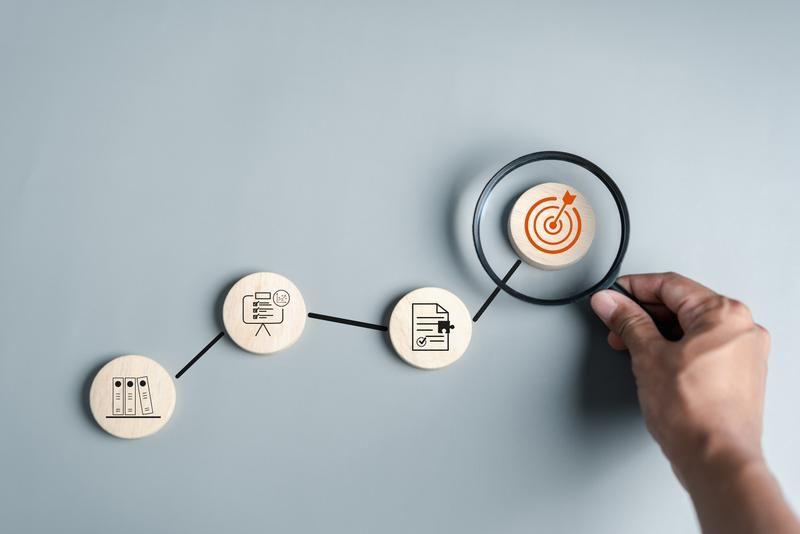
Non-price competition
Non-price competition is a strategy that implies attracting customers and increasing sales by providing superior product quality, a unique selling proposition, a great location, and excellent service rather than lower prices. It helps brands stand out and win new consumers.
In this article, we’ll unveil which businesses use non-price competition. We’ll also review the benefits and methods of non-price competition.
Which companies use non-price competition?
Today, price is one of the many factors that influence customer decisions. Nowadays, people pay close attention to quality, features, customer service, and many other things. They influence their consumer experience hence buying decisions as well.
Many brands rely on non-price differentiators like quality, unique selling proposition, competitive advantage, location, customer service, etc. The majority of them you use daily. For example, Airbnb provides vacation rentals, apartments, beach houses, and unique homes. The company offers its product as a service. The brand’s team ensures an amazing experience for its users and cares about their safety and comfort. Other businesses that rely on non-price differentiators are oDesk, TaskRabbit, and Fiverr.
In the technology industry, Apple remains a leader in product sales. The company has relatively high prices on its iPhones, iPods, MacBooks, and iPads. The brand relies on the quality and endurance of its products, and that’s why people still prefer to purchase Apple products rather than its substitutes.
Starbucks is one of the most successful coffee companies in the world. People know them for their tasty coffee and names on drinks. Consumers visit its coffee shops despite the high prices for food and beverages. People like to go to Starbucks and pay around $5 for a small cappuccino rather than visit McDonald’s and buy the same drink for $3.
Now that you know what types of companies use this marketing strategy, it’s time to unveil the advantages. They will help you figure out how you can benefit after implementing the approach.
Benefits of Non-Price Competition
You can reap numerous benefits after successfully implementing non-price competition. Let’s discover them in this section.
The benefits of non-price competition include:
increased demand;
higher sales;
bigger market share;
higher revenues;
competitiveness within the market;
the possibility to stand out;
positive reputation;
brand recognition;
visibility;
constant product improvements;
wide customer base;
healthy competition.
Now that you know the pros, it’s time to jump into the methods. The next section will help you figure out how to incorporate non-price competition approaches.
Methods of Non-Price Competition
Non-price competition implies using various approaches to catch prospects’ attention and convert them into loyal customers. We’ll review the most effective ones to use for your business. They will help you shape a big customer base, drive sales, and increase customer loyalty. Let’s explore them all.
Provide superior quality. Often companies differentiate themselves from others by providing customers with high-quality products. It causes higher prices. Although the price might be relatively high, people still buy the products because of the quality they can’t find in any other brand. For instance, Apple users will continue to purchase Apple products because they already know they will serve longer and provide an exceptional experience.
Ensure excellent customer service. Customer representatives play a great role in building a positive reputation for your company. Make sure to have friendly, open-minded, and compassionate customer support agents. They should listen to customers’ pain points, answer questions, and solve their problems. Customer support agents also need to participate in customer onboarding. If your team does a great job, you can attract new customers, win sales, and receive higher revenues.
Create loyalty programs. Many companies have already implemented loyalty cards. They contribute to customer loyalty and more sales. Consider rewarding your current consumers with cashback and points. This way, the number of repeat purchases will increase. Many airlines have already incorporated this technique into their business. For example, customers of Emirates can redeem their Emirates Skyward Miles to book a flight to any destination in any class. Customers earn points when they book tickets with Emirates.
Provide after-sales service. The communication with consumers doesn’t end when you get a sale. You should help your customers after the purchase when they face problems with a product, onboarding, warranty, repair, etc. Your customer support should react to users’ inquiries. They need to provide warranties, free repairs, product changes, or consultations. Great after-sales service encourages customer trust and brand loyalty. For instance, Whirlpool kitchen appliances have a one-year warranty from the date of purchase.
Implement innovation. Since customer demand, trends, and preferences often change, companies should be ready to adapt. They need to be open to innovations. To stand out from the competition, you should be ready to roll out new product features and pivot to new demographics. For example, when the demand for water-resistant products increased, Samsung developed waterproof watches and smartphones. They implemented new technologies to provide these items.
Ask customers for reviews. Customer opinion is essential for business owners and other consumers. Ask your current consumers about their experience using your product. They can share positive reviews about your product or service on various platforms in open access like Yelp, Facebook, and Google My Business. Since people pay attention to the recommendations of their friends and read reviews before purchasing a product, customer reviews will help them make a confirmative decision. For example, if you sell on Amazon, let users leave comments about your product. With LIKE.TG, you can ask for reviews through multiple channels, such as email campaigns, chatbots, and SMS. The service allows you to create an automation triggered by purchase and send emails asking for feedback or review.
Ensure a unique selling proposition. The modern world requires you to provide customers with customizable products. These goods can serve the needs of various people. For instance, lactose intolerant people now have many substitutes for dairy products. Vegans can enjoy gluten-free, sugar-free, and vegan products in different industries. For example, Body Shop provides vegan products not being tested on animals.
Offer free delivery. Reward your customers with free delivery once they buy for a certain sum of money. It will encourage them to purchase although the price for the product isn’t reduced. People often pay attention to perks like free delivery, gifts, rewards, discounts, etc.
Congrats, now you know what non-price competition is and why it’s crucial. Use our methods to improve the profitability of your business.

Niche marketing
Niche marketing is a technique that implies targeting a unique audience segment with specific needs and wants. It helps companies understand the needs of a certain group of people and address them instantly, encourage customer loyalty, and have fewer competitors.
In this article, you’ll explore the advantages and disadvantages of niche marketing and figure out how to find your niche. You’ll also review some excellent examples of successful niche marketing ideas.
Advantages and Disadvantages of Niche Marketing
It might be challenging for some brands to sell because they can’t meet the requirements and appeal to the tastes of a broad audience. However, choosing a specific niche and focusing on the wants of a certain market segment can be very beneficial. A company specializing in selling clothes for pregnant women can predict the desire of women to look good and comfortable during this special time. Brands can create loose clothing that customers like and don’t create discomfort. Although the benefits of niche marketing are already clear, we still need to discover them in more detail.
One of the key advantages entrepreneurs should pay attention to is the reduced competition. Once you decide to serve a specific audience segment, you’ll see that only a few companies provide the same product. Since your target audience is smaller than usual, you'll be able to invest more resources and time in improving customer service and relationships with consumers. As a result, your company will encourage brand loyalty.
Since advertising for niche marketing is highly targeted, you’ll save marketing costs. If your product doesn’t have many substitute products, customers will pay even if it’s more expensive than usual. So you’ll have a good profit margin.
Yet niche marketing also has its disadvantages. They include limited growth and profits, business risks, vulnerability to market changes, lack of “economies of scale,” dependence on a single product, etc.
Now that you know the pros and cons, it’s time to uncover how to find a niche market.
How to find a niche market
Stick to our short step-by-step guide to find your perfect niche. We’ve prepared five steps for you to consider.
Identify your key interests and passions. The areas you are interested in will be perfect ideas for your niche marketing. Think about your hobbies, skills, and the things you are good at. For this purpose, try brainstorming to figure this out. Think about what you do in your spare time, your natural skills, and topics you know and like to learn about.
Research customers’ pain points. Once you identify your main ideas, proceed to the needs and problems of your target audience. After, decide how to solve their pain points with your product. Think about how your passion or interest will meet customers’ needs and what things will motivate them to purchase your product. Researching your target audience is essential since it’ll help you identify their buying behaviors and challenges. Leverage various marketing tools to create your buyer persona.
Conduct competitor analysis. Before establishing a brand, you need to make sure that the product you want to offer doesn’t have a high level of competition. A great idea isn’t enough for starting a business. You need comprehensive competitor research. After conducting an analysis, you’ll know your competitors and their offerings. It’ll help you find the right direction and marketing strategy. Use tools like ClickBank, Google Trends, and Ahrefs to do quality competitive research. Once you do it, you’ll identify the best selling products and find out whether your product meets customers’ needs.
Calculate the profitability of the chosen niche. If you want to establish a startup, you need to check whether it can bring profit. To evaluate the possibility of success for your niche, pay attention to the following factors: customer location, product quality, demographics, price, and target audience’s interests. If you find out only a few companies selling similar products after the research, your brand can be successful. Also, analyze the price points of rivals to sell your product at a competitive price.
Test your product for success. Develop a landing page or a simple site for customers to find your product. Consider providing visitors with a trial period or free products. The product you offer shouldn’t be fully priced. To attract more visitors, use paid ads. As a result, more users will be acquainted with your brand. This way, you’ll find out whether people are interested in your offer and are willing to pay the price to get it. If your test fails, revise your strategy and pricing points. Look for the areas that need your immediate action and attention.
Now that you know how to find your perfect niche, let’s explore some successful examples.
Examples of Successful Niche Marketing Ideas
Brands with special niches have many great ideas you can leverage to implement niche marketing successfully. Below we’ll review some of them for you to grab some inspiration.
Georgetown Cupcake
The two sisters and co-founders of Georgetown Cupcake followed their passion for baking and opened a great place for cupcake fans. The variety of pieces amazes and allows you to make stunning presents for your loved ones. Everyone can find a cupcake based on their tastes: Chocolate Ganache, Red Velvet, Vanilla Birthday, etc.
Lefty’s
After being limited to working for someone else’s vision, the owner of Lefty’s Cheesesteak decided to open a fast-food company for left-handed customers. It’s a perfect example of a successful implementation of niche marketing with lefties as the target audience.
Divvies
Divvies serves people with dietary restrictions to peanuts, tree nuts, eggs, and dairy. The brand helps customers live a life without limitations and eat their favorite fresh bakery, vegan and nut-free cookies, and cupcakes. With the company's help, people with food sensitivities can still eat everything they wish. This exclusive brand successfully serves this segment of people.
Congrats, now you know the main advantages and disadvantages of niche marketing. Hope our instructions and examples will serve you as a hint for your further niche marketing efforts.

National brand
A national brand is the brand of a product manufactured and spread nationwide using a brand name and owned by this company. It brings companies brand recognition, customer loyalty,and high revenue.
Advantages and Disadvantages of National Brands
National brands are considered superior to private labels because they have brand recognition and high revenue. National brands have the following advantages:
reduced marketing expenses because the brand already has wide recognition;
a high level of customer loyalty;
a high level of visibility so consumers can recognize the brand on the shelves of stores;
high customer trust;
nationwide distribution;
promotion on television;
people are more likely to repeat their purchases if they like the products.
Nevertheless, like any other brand, it has its cons too. There are several disadvantages to consider:
high costs for start-up companies;
decreased profit margin if the prices are too high for customers;
no exclusive marketing rights.
Now that you know the advantages and disadvantages of national brands, let’s review in more detail national brands and private labels.
National Brand vs Private Label
Years ago it was easy to find products with private labeling on the shelves of grocery stores. When national brands had colorful packages and words describing the high-quality of the products, private label products were considered “generic” without having special packaging or branding. That’s why consumers at that time assumed that a private label was inferior to its competitor — national brand. However, times have changed.
Nowadays more and more retailers invest in their private labels to differentiate themselves from other brands and develop customer loyalty. Hence, product manufacturers should understand the difference between the both types of products, their pros and cons to select the most appropriate for them.
National Brand
A national brand can be defined as a brand of a well-established product. This company has a name that people love and trust and although the price of such products is usually higher, consumers still don’t stop buying them. You can find national brands everywhere. Let’s take Breyers, for example. The company is famous for its tasty ice cream and frozen dairy desserts made with the best quality ingredients and can be found in the freezer section in any store.
Customers choose national brands because they are considered to be more reliable and familiar, and, of course, their products have higher quality. To become a national brand a company needs years of growth and success in the industry. However, all national brands begin from small companies and only a handful of corporations become recognizable and gain the trust and love of their consumers.
You can buy products from national brands nationwide. Therefore, to deliver products anywhere in the country, such brands have numerous manufacturing centers and distribution channels. Besides, national brands tend to use media advertising extensively to create and maintain brand awareness among their prospects and customers. This also helps them to be the most recognizable brand. You can find examples of national brands in your everyday life: fast food, clothing, laptops, foods, etc.
Private Label
In 2016, Amazon began to provide its customers with fashion and clothing accessories under its private labels. Now Amazon owns the ten most successful private label brands. This event improved the situation with private labeling and gave an idea to retailers to follow the same procedure.
A private label product can be defined as a product that a retailer obtains from a third-party manufacturer and distributes it under its brand name. Retailers mention what goes in it, the details about the product's package, and the label. According to Statista, the market share of private label brands in the US was 19.3% in 2018. Private labeling brings the following pros to your business:
eliminated additional costs as you don’t need to spend resources on a premium brand name and costly marketing campaigns;
improved manufacturing process that results in higher customer loyalty;
steady sales due to the lower prices.
Yet business can't do without risks. By investing in a brand's design and its packaging, private label owners risk losing their investment costs in the event of a product failure. Besides, this type of brand can suffer from the lack of customers’ trust and recognition that national brands have. Despite the risks, private label products are more and more popular due to consistency and affordability.
Now you know the distinctive features of these two brand types, so let’s walk you through the examples. They’ll help you identify national brands among those that you often meet in your everyday life.
Examples of National Brands
Wrangler
Ben Jerry's
Levi Strauss Co.
To see what is meant by a national brand, check out these great examples from different world-known brands.
Wrangler
The company founded in 1904 is famous for its clothing, particularly workwear. The brand created in the US is especially appreciated for its jeans. Customers choose Wrangel because of their western clothing and comfortable jeans.
Ben Jerry's
The brand established in 1978 is known for its ice cream and frozen yogurt. Consumers know firsthand about their great ice cream and social missions. Founded in the US, the company was later bought by the world-known multinational company Unilever. Today, the world has over 5,000 of their ice cream shops in thirty countries.
Levi Strauss Co.
The company founded in 1853 in the US is famous internationally for its denim jeans. The brand manufactures not only jeans but also jackets, T-shirts, shirts, skirts, belts for men, women, and children. Levi’s is considered to be one of the biggest apparel companies in the world and a leader in the production of jeans. Their products are now available for customers in 110 countries.
In today’s world customers still trust national brands more because they are recognizable, memorable, trusted, and proven over the years. People are willing to pay more for quality and recognition. However, private labels that provide consumers with a lower-cost alternative albeit slowly but gain popularity now.
Resources:
The article “Brands Versus Private Labels: Fighting to Win” describes the advantages and disadvantages of national brands and private labels.
The article “4 Benefits of Private Labeling for Your Brand” explains the term and provides readers with the benefits of private labels.

NPS survey
NPS (Net Promoter Score) survey is a survey used to assess how likely customers are to recommend a brand or a product. This metric helps evaluate customer satisfaction and loyalty toward a specific company. NPS survey is the most effective way of collecting data about the likelihood of clients sharing a brand with their friends and colleagues.
Watch the video to create an NPS form with LIKE.TG for free!
In this article, we’ll uncover the purpose and benefits of the NPS survey. We’ll also show you how to create an NPS survey and provide some effective survey tips.
What is the purpose of the NPS survey?
Net Promoter Score is a single question asking clients how likely they are to recommend a specific brand or product to their friends and colleagues. Customers can assess their satisfaction with a company on a scale of 0-10. After conducting a survey and getting the results, business owners group customers based on their rate and loyalty towards a brand: promoters (9-10), passives (7-8), and detractors (6-0). Net promoter score allows company owners to assess satisfaction with their products and services and determine the issues that make customers unhappy.
The main purpose of the net promoter score survey is to assess customer loyalty and satisfaction. With a two-minute survey, you’ll be able to receive insights into customer experience with your brand. Obtained data gives you space for improvement, future business opportunities, and company growth.
Depending on the survey results, you can figure out how loyal your customers are. When you have 9 and higher, people are happy with your company and don’t plan to go to your competitor. When you have 7 or lower in your NPS survey result, you’ll need to consider some measures to improve customer satisfaction and experience.
Now that you know the main purpose, it’s time to explore the benefits of the NPS survey. They will encourage you to consider this metric for your business.
Benefits of the NPS Survey
Customer retention
Better customer experience
Company growth prediction
Qualitative feedback gathering
Benchmarking
Customer loyalty identification
Continuous improvements
The main advantage of the NPS survey is its ability to evaluate customer loyalty and clients’ satisfaction with your brand. Its simplicity encourages customers to provide answers and helps brands attain actionable insights. There are even more pros that NPS surveys can bring to businesses. Let’s check them out.
Customer retention. High scores in the NPS survey indicate high customer loyalty and satisfaction with your brand. Happy clients stick around and make repeat purchases, staying loyal to your company. It results in lower customer churn and higher customer retention. If buyers remain with your brand, you don’t need to allocate additional costs to acquire new customers.
Better customer experience. With the help of the survey, your company focuses on overall customer experience. The scores help you evaluate the likelihood of recommending your brand and measure the possibility of customers promoting your company. Word-of-mouth promotion is much more valuable for business owners than paid ads since people trust the experience and recommendations of real buyers. By assessing the likelihood of becoming a brand advocate, you can identify and eliminate the gaps in customer experience. Clients who are happy with your product and services will tell you about your company to their friends and family.
Company growth prediction. The results of the NPS survey allow you to predict whether a company will succeed and bring higher revenue shortly. If your business has many promoters, it can experience more sustainable growth. Loyal customers bring constant revenue to your company compared to newcomers who usually perform only one purchase and leave. Moreover, they can become free advocates of your brand. As a result, your customer base will expand, and the number of deals will increase.
Qualitative feedback gathering. You can present an NPS survey as one question, giving customers space for open-ended answers. By asking your clients why they give you such a rating, you can gain some qualitative responses. This way, you'll identify the problems your brand and customers face when dealing with your business. This information is precious to improving the overall experience with your company and ensuring seamless interactions with clients.
Benchmarking. The results of the survey help identify the performance of your business compared to competitors. This way, you can find out whether your company outperforms or underperforms. Compared with others, this metric provides valuable insights into customer satisfaction.
Customer loyalty identification. The metric enables you to assess the level of customer loyalty towards your brand. The information you gain after the survey provides insights into the overall experience with your brand, which results in business growth if clients are satisfied.
Continuous improvements. By assessing NPS regularly, you can incorporate a series of improvements regarding customer experience, customer service, or product. Since customer needs and preferences change fast, you can identify them and make adjustments. This will help you retain customers and prevent them from leaving once they have slightly different needs.
To reap the benefits of an NPS survey and determine whether customers appreciate your brand, you should know how to calculate it and what those indicators mean. That’s why, in the next section, you’ll find a short and easy-to-understand guide on estimating your net promoter score fast.
How to calculate net promoter score?
After conducting an NPS survey, it’s a must to calculate your net promoter score to determine how many of your customers are happy with your brand and ready to promote it to family and friends. We’ll provide you with a short, detailed guide on doing it easily, so let’s dive in.
Calculating the net promoter score for your company requires you to send your customers a short survey containing one simple question. It asks clients to evaluate how likely they are to recommend your product or brand to friends and colleagues. The question often looks like this: “On a scale of 0 to 10, how likely are you to recommend our product/service to a friend or colleague?” Customers can choose any rating on a scale of 0-10. Then, you should divide respondents into groups based on their ratings.
There are three main groups of customers according to the net promoter score scale: promoters (9-10), passives (7-8), and detractors (6-0). After grouping customers based on their rate, it’s time to check out a formula for calculating the net promoter score.
NPS = (Promoters/Total Number of Respondents)*100 - (Detractors/Total Number of Respondents)*100
It’s time to see how to estimate the measure with an example. Let’s say you have 100 respondents, 70 of which are promoters, 5 passives, and 10 detractors. Your calculations will look the following way:
NPS = (70/100)*100 - (10/100)*100 = 60%
Your net promoter score would be 60%.
However, before calculating your NPS, you need to conduct an NPS survey. The process is simple when you know the steps you should take. That’s why we’ve provided the most essential instructions on conducting an NPS survey for your business.
How to conduct an NPS survey?
Identify your goals
Outline NPS question
Find the best survey channel
Identify the perfect time for sending your survey
Collect responses
Calculate net promoter score
Take action based on the results
Share results with the team
An NPS survey is a simple way to collect customer feedback on your products and company in general, but it should be implemented wisely. That’s why we’ve prepared a short, detailed guide on how to do it for your business.
Identify your goals. Before creating and sending your NPS survey, you should have a clear understanding of the goals. Usually, company owners need an NPS survey to evaluate customer loyalty and satisfaction and find space for improvement. Consider defining the audience segments you want to send your survey to. You can assess different areas and stages of your business when sending NPS surveys to recent buyers, existing customers, or long-term clients.
Outline your NPS question. Writing a net promoter score question isn’t hard at all because it’s universal for any business. You can send the following statement: “On a scale of 0 to 10, how likely are you to recommend our product/service to a friend or colleague?” or its variation. However, depending on your primary goals, you can also have open-ended questions, allowing you to gather qualitative feedback and identify issues with your business if you have any. As an option, you can add more questions if you need information to optimize your website, user experience, or customer support.
Find the best survey channel. You should choose channels for sending your survey based on customers’ preferences. There is a wide range of options available, including email campaigns, chatbot messages, pop-ups, SMS, phone calls, and in-app notifications.
Identify the perfect time for sending your survey. When sending an NPS survey, consider several factors: time, personalization, and frequency. You should send your survey when customers are more likely to respond. Usually, the perfect timing is shortly after a purchase or interaction with your brand. If you want to get more responses and engage customers, it’s worth personalizing your NPS survey. However, you shouldn’t send personalized surveys too often because it might overwhelm and annoy your customers.
Collect responses. You can gather responses automatically using a special service or do it manually. With the help of a service like LIKE.TG, you can instantly collect all the data and gather valuable insights, enabling your business improvement.
Calculate net promoter score. Divide customers into groups based on their rating and estimate NPS using the formula above. If you have open-ended questions, pay attention to the responses. They might unveil specific issues with your company that influence customer satisfaction.
Take action based on the results. When your customers provide qualitative feedback, you can have a clear understanding of the problems customers face and suggestions they have for improvement. Ensure prioritizing issues clients pay attention to when optimizing some areas of your business. This will help you improve customer satisfaction and shopping experience.
Share results with the team. After analyzing and making conclusions on the received feedback, it’s essential to share the results with team members responsible for future improvement. You should also update customers about the upcoming optimization.
Although conducting an NPS survey seems to be a simple task, indeed, it’s not if you perform it manually. This is because you can receive many responses, and it will take days for your team to review them individually. Fortunately, many tools will help you with this task. We’ve listed 5 best platforms for you to consider when conducting your NPS survey.
5 Best NPS Survey Tools
LIKE.TG
Survey Kiwi
SurveyMonkey
Jotform
SurveyLegend
Managing data from NPS surveys can be overwhelming when performed manually. That’s why we recommend looking for a useful platform that suits your business size and target audience. We’ve listed 5 best tools for you to consider.
LIKE.TG
LIKE.TG is a useful marketing tool for creating pop-ups containing NPS surveys. The platform’s drag-and-drop builder enables you to select the NPS survey pop-up type and design it from scratch or edit a pre-built template based on your requirements.
With the service, you can select a variable to store user feedback values in the mailing list and select rating options (stars, emoji, hearts, like/dislike, or numbers). You can also add a comment field to collect and save qualitative user feedback.
LIKE.TG also offers customization options. You can change the appearance of your survey by inserting text, uploading images, adding buttons, social media links, an entry field, radio buttons, multi-select elements, and dropdown menus.
Below, you can see how easy it is to create an NPS survey using LIKE.TG’s ready-to-use template.
Pricing: If you have a small audience of customers, you can enjoy the benefits of a free plan that covers 5,000 views monthly, an unlimited number of subscribers, 1 project, and 5 pop-ups per account. In case you want to build more pop-ups with NPS surveys, you should consider a paid plan starting at $ 6.40. It includes 10,000 views monthly, an unlimited number of subscribers, 3 projects, 10 pop-ups per account, video pop-ups, and A/B testing.
Survey Kiwi
Survey Kiwi is a service empowering you to create forms and surveys in minutes and deliver them to customers through emails, WhatsApp messages, QR codes, websites, SMS, or social media platforms. With the service, you can choose from various templates and customize your survey to align with your brand, target audience, and key objectives. The platform allows you to enhance your surveys with images and logos and adjust colors and fonts to match your branding, ensuring they resonate with your customers.
Survey Kiwi has a powerful data analysis tool that enables you to filter responses, download reports in multiple formats, and share the results. With its help, you can easily collect all the customer insights and analyze them without much effort.
Below, you can see the process of building an NPS survey with Survey Kiwi.
Pricing: You can try the service for free, but continued use requires purchasing a paid plan. If you opt for annual billing, the most affordable plan costs $7 monthly. This plan includes 100 responses, unlimited campaigns, questions, and workspaces.
SurveyMonkey
SurveyMonkey is a well-known survey tool that can be effectively used for implementing NPS surveys. The platform offers a library of 250+ templates and hundreds of expert-written questions for various survey types. You can build beautiful personalized surveys with the platform’s easy-to-use theme designer. When using the tool, you can choose fonts, colors, logos, custom URLs, and styles that resonate with your audience.
With custom variables, you can personalize questions by embedding names and tailoring them to each respondent or customer group. The platform also lets you choose the right format for your NPS survey. You can ask only one question at a specific time and turn your survey into a conversation by asking several related questions.
Below, you will find an example of creating an NPS survey in SurveyMonkey.
Pricing: The service has a free plan, but it doesn’t cover templates for NPS surveys. If you need ready-to-go templates, you’ll need to buy a paid plan starting at €30 per user monthly if billed annually. It covers 50,000 responses per year, a shared asset library for on-brand surveys, custom logos, colors, survey URLs, and many others.
Jotform
Jotform is a versatile online form builder that helps create and distribute various forms, including net promoter score surveys. You can design good-looking surveys with no coding skills needed in minutes. The platform allows you to customize your forms by changing fonts and colors and adding your brand logo.
The service offers a library of 10,000+ pre-built, fully customizable templates, enabling you to build NPS surveys in seconds by adjusting the templates and personalizing them based on your company’s needs and requirements.
Below is an example of Jotform’s NPS template that allows you to build your survey fast.
Pricing: Jotform has a free plan covering 5 forms, 100 monthly submissions, 1 user, and 1,000 monthly form views. If you need to create more forms, purchase a paid plan starting at $34 monthly if paid annually. This plan allows you to create 50 forms with 2,500 monthly submissions, 1 user, and 100,000 monthly form views.
SurveyLegend
SurveyLegend is a tool for creating visually appealing and effective surveys. Surveys built with the platform are highly customizable, meaning you can add various elements to collect all the necessary information from customers. The service allows you to duplicate survey questions, set acceptable, maximum, and minimum input formats, scale rating ranges, add required answers, use pictures in surveys, and more.
You can further personalize your survey design by customizing themes, adjusting font sizes, and creating color schemes. You can also upload custom backgrounds to make your surveys stand out. With the service’s mobile-friendly designs, you can easily survey customers on various devices, including laptops, PCs, smartphones, and tablets.
Below, you can see how to create an NPS survey from scratch using SurveyLegend.
Pricing: You can start using the service with a free plan, allowing you to create 3 surveys, upload 6 images, and collect up to 1,000 responses per survey. If you have a larger customer base, consider upgrading to a paid subscription starting at $15 per month when billed annually. This plan includes 20 surveys, 10 conditional logic rules, and 5,000 responses per survey.
When sending NPS surveys using specialized platforms, it’s important to know how to phrase net promoter score questions to encourage more responses. While the core question remains similar across businesses, there are variations you can use at different times. Let’s review them next.
7 NPS Survey Questions to Get Better Insights
If you want to get more actionable insights that provide accurate information about how things work and don’t with your business, you should ask the right questions. Below, you’ll find NPS survey questions to get more value.
On a scale of 0 to 10, how likely are you to recommend our product/service to a friend or colleague?
This is the first and basic NPS question customers often see in their inboxes, apps, chatbot messages, websites, etc. The question is designed to collect quantitative data, focusing only on numbers. You can slightly change and adjust this question based on your target audience and the information you want to obtain.
Considering your shopping experience with us, how likely are you to recommend our brand to a friend or colleague? (0-10)
You can customize NPS questions by altering the words and phrases to fit your needs better. These surveys will help you gather customer feedback about their shopping experience with your company, providing valuable insights into this aspect of your business.
How likely are you to recommend our company to your friends and family after receiving and using our product?
You can always reword the question to sound more relevant to specific customer behavior. The survey is easily adjustable, meaning you can resonate with the customer's life cycle, purchasing history, or behavior.
What do you like most about our product/service?
After asking the basic question, you can follow up with your promoters by asking them to provide open-ended responses. This question helps you find out what makes them happy with your product. These answers allow you to identify what you do right for customer satisfaction and loyalty. As an option, you can provide customers with ready answers so they can answer quickly without spending too much time writing.
What motivated you to provide our company with a high score?
This open-ended qualitative question helps your company gain deeper insights into what you are doing well and what satisfies your customers. By receiving this feedback, you can effectively focus on the right strategies and approaches that work.
What could we do to improve your experience with our product?
This qualitative question allows you to highlight areas of improvement. Your clients can feel free to share their thoughts and recommendations regarding specific aspects of your product you should improve and ways you can do it effectively. This kind of question is usually used as a follow-up question for passives.
What should we do to impress you?
This qualitative question is customer-centric, showing clients that you care about them and appreciate their loyalty. By sending such a survey, you’ll still be able to get some valuable insights into your company's improvements.
Knowing NPS survey questions is just one step toward NPS survey analysis. To find out how it works, you should know each step, which we’ll show you in the section below.
NPS Survey Analysis
Calculate your net promoter score
Segment responses
Review open-ended answers
Determine main drivers
Compare current NPS with previous
Turn responses into visual elements
Outline actionable insights
Develop a plan of improvement
NPS survey analysis isn’t just about sending one simple question to your customers. It's about reviewing the data provided to identify problems, find solutions, and make robust improvements. It’s time to find out how to do it effectively.
Calculate your net promoter score. After receiving customer feedback, divide their answers into groups based on their scores. Clients with 9-10 will go to the promoters group, those with 7-8 belong to the passives group, and those with 0-6 should be in the detractors group. Then, estimate your NPS with the formula provided earlier.
Segment responses. Divide feedback based on demographics, behavior, and customer lifecycle. Consider analyzing scores based on customers’ gender, location, and age. You should also pay attention to clients’ usage patterns and purchase history when segmenting the obtained data. Customer lifecycle also matters when analyzing responses.
Review open-ended answers. Once you proceed to analyze open-ended responses, you should determine the often mentioned themes and topics, overall emotions and feelings about your company and products, and how often specific words and phrases occur. All these elements will help you discover what customers like about your brand and identify common problems.
Determine main drivers. The next step involves determining the key factors that influence customers’ experiences. Use both qualitative and quantitative data to find correlations.
Compare the current NPS survey’s results with previous ones. You should compare your current NPS results with previous ones to identify changes over time. Additionally, consider benchmarking your NPS against competitors to determine if your score is strong within your industry.
Turn responses into visual elements. Visualize data about promoters, passives, and detractors using graphs, trend lines, and charts. It will help your team identify the main points fast and take action. You should also turn qualitative data into word clouds to feature frequently mentioned words and phrases.
Outline actionable insights. Consider analyzing each of the groups to find out more information about your business. You should review promoters’ responses to find out what works well in your company and support these areas. When analyzing passives' feedback, you can understand what prevents these customers from becoming promoters. With their help, you’ll be able to identify issues that hold them back from giving you the highest score. Detractors’ data will allow you to solve problems resulting from negative experiences.
Develop a plan of improvement. After conducting an NPS survey, follow up with customers to thank them for their answers and inform them once improvements are made. You should work on the plan with short-term and long-term improvements. There might be quick fixes and serious changes that require a detailed analysis. They should be implemented carefully to increase customer satisfaction and your future NPS.
When conducting an NPS analysis, there are best practices you should keep in mind. We’ll provide them in the next section so that you can effectively send a net promoter score survey and obtain actionable insights.
10 NPS Survey Best Practices
Make a straightforward question
Use a 0-10 scale
Choose the right timing
Use open-ended questions for more details
Segment respondents and their answers
Develop a schedule for NPS surveys
Take action after receiving customer feedback
Combine NPS with other metrics
Personalize communication based on customer groups
Consider implementing incentives to encourage responses
The effectiveness of your NPS survey depends on the way you create it. If you want your survey to provide valuable insights, you need to follow specific steps. In this section, we’ll unveil the best NPS survey tips.
Make a straightforward question. Your NPS survey question should be as simple as possible. Ask customers how likely they are to recommend your company or product. There’s no need to write long, complex questions. Your clients should be ready to understand and answer your NPS survey instantly.
Use a 0-10 scale. Consider incorporating a 0-10 scale to receive responses to your survey. When you stick to this classic scale, this consistency will help you ensure benchmarking or comparison across various periods or units.
Choose the right timing. Conduct research on customer communication to determine the ideal timing for sending your NPS survey. Consider sending it shortly after customer interactions, product usage, or purchases. This timing ensures customers provide feedback based on their recent experience with your company or product.
Use open-ended questions for more details. If you want to get not only a score but also qualitative feedback, it’s crucial to add open-ended questions. After customers answer these questions, you’ll have valuable insights into customers’ reasons to recommend your brand or not. Clients’ ratings and open-ended responses will guide you into implementing actionable improvements.
Segment respondents and their answers. By dividing customers based on their demographics or regions, you can tailor improvements according to their groups and specific preferences related to their age, gender, needs, location, etc. You’ll be able to develop strategies that meet the requirements of each of your segments.
Develop a schedule for NPS surveys. Since customers’ tastes and needs often change, you need to conduct surveys regularly. Consider implementing a schedule of consistent NPS surveys. It will help you identify trends, evaluate the impact of changes, and measure the effectiveness of the latest improvements.
Take action after receiving customer feedback. The most valuable point of obtaining customer feedback is using it correctly. Once you get information from the NPS survey, you need to act on this feedback. That’s why you should establish a clear process of analyzing feedback, resolving problems, and making changes to improve the customer experience.
Combine NPS with other metrics. Although the NPS survey is crucial for businesses, it would be more useful to implement it with other metrics like customer satisfaction, customer effort score, and revenue metrics. It will give you a clear picture of the customer experience.
Personalize communication based on customer groups. Think of your follow-up questions according to customer groups. After you identify your clients as promoters, passives, and detractors, you’ll need a different approach for each segment. You’ll need to interact with promoters and detractors differently. It is essential to show that you value each customer's feedback.
Consider implementing incentives to encourage responses. Think of using incentives for survey participants. However, you should be careful with incentives so that clients give you objective responses. Your main goal is encouraging more responses without influencing customers’ opinions, accuracy, and honesty.
Before implementing the provided best practices, you should know how it works in real life. We’ll provide you with examples from different brands for inspiration.
NPS Survey Examples
There are different examples of NPS surveys that managed to attract customers and encourage them to provide actionable insights. We’ll uncover several of them so you know how to do it for your company.
TomTom
TomTom, a location technology company, added an NPS survey to its website to assess the quality of its landing page. Users can provide their feedback on this specific page and give a score from 0 to 10 to evaluate the likeliness of them recommending this company to their friends and family.
This NPS survey is visible and encouraging to leave feedback. Site visitors can simply choose emojis and score and provide the company with valuable insights. Moreover, if users have something more to share, there’s also space for open-ended responses and screenshots. This way, TomTom strives to get more information on issues that appear on its website and eliminate them as soon as possible.
Booking.com
Booking.com customers can access the company’s NPS survey through its app. After staying at hotels booked through the platform, clients can easily assess their satisfaction with the service by selecting a numerical score. The question is straightforward and prominently displayed, requiring customers only to choose a number without the need for further explanation.
Comparably
Upon landing on the website and scrolling through, users encounter a pop-up NPS survey from Comparably. It prompts site visitors to take a few minutes to answer questions, enabling the company to gather valuable information. In addition to providing a 0-10 scale to rate satisfaction, Comparably invites users to respond to six additional questions that vary and focus on user experience.
Congrats! Now you know what an NPS survey is and why it’s essential. Hope that our detailed guide and tips will help you create an effective NPS survey. Register now to enjoy the benefits of using LIKE.TG for your NPS surveys.

Native advertising
Native advertising is a type of advertising that matches all the content ona platformon which it appears. Such adsresemble unpaid content, so users do not identify them as ads.
In this article, we will explain why you should use native advertising and how to make it work. We willgo over the benefits of native advertising, describe the types of native ads, andprovide examples.
Why should you use native advertising?
There are different ways to promote products, and native advertising must be the most popular one. Here, we will explain why you should use native ads and how they canscale your business.
The main advantage of native advertising is that it does notprovoke immediate audience rejection. Consumers become moreresistant totraditional ads and develop banner blindness. Even so, native ads are not identified as promoted content and do not have straight calls to action.
Here is whyimplementing this type of advertising is so effective:
Native ads pan out. They increase customers’purchase intent and engage them more than original editorial content. Consumers interact with native ads more than with other types of advertising.
Native ads don’t tire out the audience. They do not cause ad fatiguethat occurs when audiences get boredof constantlylooking at ads. Native advertising engages customers without making them feel tired.
Consumers are more loyal to native ads. Theyare aware that native ads are a form of advertising. However, ifa resource has alreadyproven its expertise, such advertising will not cause a negative reaction. An experiment at Stanford University on how people distinguish native ads from other types of contentproved that although consumers identify native advertising easily,it still affects their purchase behavior significantly.
Now that you know why you should use native advertising, let’s proceed tofind out the way native ads work.
How do native ads work?
The goal of native advertising is to create a natural advertising messageand increase the number of targeted actions. The platform where you place your ads and the content you promote are your key factors for success. Consumers see native advertising embedded into sites or apps they use every day. It is subtly and naturally woven into the digital content and feels like it should be there. If people are interested in advertised products, they are more likely to engage with ads even if they are labeled as “sponsored” or “branded.”
To sum up, native adspan out because they do not look like ads and bring value to customers. Let’s move to the nextsection to discover the advantages of native advertising.
Benefits of Native Advertising
If you want to promote your business, we recommend giving this type of advertising a try.Let’s review some native advertisingbenefits andtalk about why they are so crucial.
Customersperceive native ads more positively.If you want to increase customerloyaltytoyour promoted material and raise the effectiveness ofyour campaign,do not use aggressive advertising messages and calls to action.
Native advertising does not invade users’ personal space.Native ads fit into the platform format rather organically.This way, consumersfind the info they are looking for and do not notice the difference betweenregular and promoted content.
Users cannot block native ads. They can block only certain elements, but they willstumble across native advertising anyway if they use a platform where it is embedded.
Natural advertising does not fall into the banner blindness zone. According to a studycarried out by IPG Media Lab Sharethrough, natural advertising has more chances to become viral on social networks. Consumers look through native ads 53% moreoften than display ads, and 32% of respondents are ready to sharethe native ad information.
As you can see, native advertising is an excellent method to promote your business. We will describe the types of native ads in the next section.
Types of Native Ads
The choice of a native ad format depends on many factors, including niche, industry, price policy, target audienceand its preferences, available resources, etc. Let’s discover the most common types of native ads to understand which onesare the best for your business.
The most popular types of native advertising are sponsored social media content, advertorial articles, and collaborative content. Take a closer look at each one below.
Sponsored social media content
Nowadays, nearly half of consumers shop using their mobile devicesmore than in-store, making social media an excellent platform for native advertisingand promoting your business.
Companies that leverage native advertising usually work with bloggers, as they have large audiences thattrust them. If a blogger promotes something, there is a great chance that their subscribers will buy this product. However, make sure to work only with experts who have not only their audiences’ trust but actual expertise and competence in your niche. Choose bloggers who have trusting relationships with their audiences and the same valuesas you do.
The most common way of implementing natural advertising is when bloggers mention services or productswhen posting content to increase customers’ brand awareness. There are different types of native ads on social media: posts, stories, videos, tweets, articles, etc.
Advertorial articles
Such nativeadsare placedin the middle of non-advertising material. As a result, they are not identified as ads, as they look natural. We can find advertorial articles in magazines, newspapers, on sites, etc.
Collaborative content
You cancome across collaborative content on video platforms and social media. Companies usually ask influencers togive their creative inputduring the productdevelopmentprocess or provide them with a discount code to gain profits.
Using collaborative content helps increase customers’ brand engagement and loyalty. Influencers who handle word-of-mouth marketingand promote a brand and its productsviadigital platforms are called brand ambassadors, and this process is called influencer marketing.
Companies are more flexible when they create collaborative content. Brands seek influencers who are ready to make every effort to communicate their message tosubscribers according to companies’ requirements and briefs.
As we can see, all these types of native ads have their peculiarities.
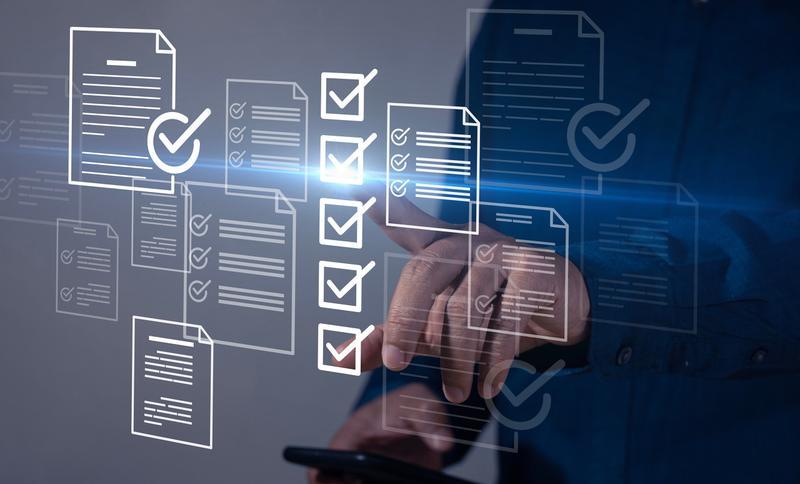
Monopsony
A monopsony is a market structure in which there is only one buyer that sets prices, generates demand, and controls the market. In this market situation, a single buyer is a major purchaser of products or services from various sellers.
Why is monopsony a problem?
A company in a monopsony has a unique position and power to set its regulations since it controls a particular industry. This market structure can be presented in various forms and businesses and is often found in labor markets.
Let’s imagine that the only supplier of jobs in a particular area decides to set low wages. In this case, employees have to agree with this decision because of this company’s control over the workforce and the absence of alternative employers. Monopsonies bring no use for workers because their power enables firms to pay wages below employees’ productivity and underestimate them.
Such companies have bargaining power and can negotiate prices with their suppliers. In this market structure, a buyer controls everything, they have a size advantage and no competitors. That’s why sellers have to agree with the purchaser’s conditions. The technology engineering market with only a few large companies demonstrates wage suppression. These firms often come to agreements regarding wages to reduce labor costs. As a result, such companies obtain high profits, and workers are left with low wages.
A buyer in amonopsonyis similar to a monopoly seller because both of them are price makers and completely control the market. It’s considered inefficient because the resources are allocated unproductively in this market situation. Moreover, a monopsonist company pays a lower price for products and labor.
Now that you know some basic information about a monopsony, it’s time to proceed to the features of this market situation.
Characteristics of Monopsonies
Since a monopsonist has buying power, sellers have to accept the rules this company creates. Three main points can characterize the market model. Let’s review each of them.
Single buyer. Firstly, it’s important to mention that in a monopsony, there’s only one buyer, a price maker. This buyer controls the market and demand. For instance, if anyone wants to sell products, the only option is to sell them to a single purchaser that exists in this market structure and comply with their terms.
No alternatives. This means that a monopsony in its pure form creates a situation in which sellers of products have no other alternative buyers. That’s why they have to sell their goods to one company that sets the prices, usually quite low. Sellers agree with that because they want to sell their products and obtain at least the minimum profit.
Barriers to entry.Monopsonies involve only one buyer because of the barriers this market structure creates for companies that want to enter the market. A single company sets certain restrictions and makes it impossible for other buyers to enter. These barriers are similar to those in a monopoly and oligopoly, includinggovernment license or franchise, resource ownership, patents, copyrights, and high start-up cost.
We’ve already reviewed the characteristics of a monopsony, so let’s walk you through its pros and cons.
Advantages and Disadvantages of Monopsonies
It’s worth mentioning that the model is entirely disadvantageous for workers since they have no alternatives and have to agree with a supplier of jobs, low wages, and certain regulations. There are benefits a single buyer (a monopsonist) reaps and disadvantages this market structure brings to sellers. The pros for monopsonists are as follows:
the power to achieve economies of scale;
control over the price and demand;
control over the market allows to depress the prices and obtain big profits;
costssavedon wages of employees.
However, the sellers of products or services often obtain the cons of this market structure:
no alternative buyers;
lower profit after selling the products;
lower wages in the labor market.
Now when you know the advantages and disadvantages, let’s make the difference between a monopsony and a monopoly clear.
Monopsony vs. Monopoly
A monopsony is a specific situation within a market where a single buyer controls the demand and price and has the power over all sellers. You can observe monopsonies when some companies or individuals position themselves as the sole purchasers of certain products. Although this market structure doesn’t include competition among buyers, it can cause competition among sellers. They can compete for the price a monopsonist offers.
Monopsony allows a buyer to obtain benefits. For example, a single employer has power over the workforce. In this situation, employees act as suppliers who have to agree with a monopsonist’s lower wages and regulations. As a result, a purchaser can save costs on wages and obtain higher profits.
A monopoly is when there is only one supplier of certain products or goods that dominates the market. This company owns all of the supply of products, commodities, facilities, and amenities. The market structure eliminates economic competition for the manufacturing of certain goods, involving all possible substitute products. Therefore, a firm makes everything to hinder other players from entering the market.
Both market structures combine the characteristics of imperfect competition. They differ because a monopsony controls the demand for items, whereas a monopoly controls the supply of the products.
Now when the difference between the two market systems is clear, it’s time to move to another section where you’ll see the examples of a monopsony in the modern world.
Examples of Monopsonies
Nowadays, you can encounter monopsonies in different industries. One of the brightest examples is supermarkets that buy products from farmers and milk producers at an extremely low price and then sell them at their highernewprice.
Let’s discuss government, for example. It is considered a monopsonist, especially when it comes to the employment of civil servants, military, police, and naval officers. However, there are even more examples, so let’s review several companies.
British Sugar.British Sugar is the sole producer of sugar from sugar beet in Britain. It is considered one of the most efficient sugar processors in the whole world. However, you probably didn’t know that this leading sugar producer buys almost all sugar beet crops produced in the United Kingdom.
Amazon. This American technology company offers the biggest selection of electronics, books, computers, apparel, and software. Amazon is also known for purchasing in the retail book market and for the power it has there. Its way of interaction with resellers shows that this company is a monopsonist.
Ernest and Julio Gallo. Today, this winery and wine distributor is the largest exporter of California wines. The company has a lot of buying power over grape growers. That is why grape wholesalers sell their grapes at lower prices and comply with the company’s terms and conditions.
Hence, different companies in various industries can operate as monopsonies. Now you are acquainted with one more market structure represented by Amazon, British Sugar, many supermarkets, and other companies.

Multichannel marketing
Multi-channel marketing is a combination of various online and offline channels that helps companies put products and services in front of the target audience at the right place and time.
In this article, we’ll discover the importance and benefits, explore the best trends and tools, and provide tips to help optimize your strategy. You’ll also check out some excellent examples and statistics of multichannel marketing, compare omnichannel and multichannel marketing, and explore the best trends and tools, along with tips to help optimize your strategy. You’ll check out some excellent examples, too.
The Importance of Multichannel Marketing
Utilizing different marketing channels at once helps brands to be present where their target audience is. Communication across different channels maximizes the chances of users' engagement. If you sell jeans, your audience comprises people of different ages. The youth spend more time on social media, while older people prefer looking for sales and discounts in their email inbox, so you need to be active on both channels.
The bigger your audience, the more revenue you can generate if you wisely combine marketing channels relevant to your business. Today, people expect all trustworthy companies to be active on social media, have chatbots, advertise via emails, and have a well-designed, informative website.
Chatbots on Facebook, Instagram, WhatsApp, and Telegram enable companies to provide support and assistance around the clock. Prospects and customers can contact customer support at any time, regardless of their time zone and the working hours of human agents. They will receive responses to FAQs in no time and make reservations, bookings, and appointments effortlessly. Implementing chatbots along with live chat empowers businesses to communicate with their customers through their preferred channels, which improves convenience, customer satisfaction, and loyalty.
Now that you know some general information regarding the importance of multichannel marketing, it’s time to uncover the pros in detail. They will help you decide whether your customers will be glad to have several channels available when they need your support.
Benefits of Multichannel Marketing
Wider reach and better visibility
More touchpoints for communication with customers
Enhanced customer experience
Comprehensive customer insights
More conversions
Higher customer loyalty and retention
Better implementation of market changes and new trends
Businesses can reap numerous benefits after incorporating multichannel marketing. We’ve listed the most essential ones, so let’s dive in.
Wider reach and better visibility. Having multiple channels for communication with customers enables you to reach people interested in your product on these platforms. It results in a broader reach and more prospects on your list. Moreover, online presence on the most popular communication channels like Instagram, Facebook, and TikTok helps you gain brand awareness, recognition, and visibility. Your brand will seem familiar to a wider audience.
More touchpoints for communication with customers. In today's business world, having more touchpoints for customer communication is essential. It's crucial not only to provide support through traditional channels but also to engage potential customers in interesting and interactive ways. Social media platforms enable you to answer FAQs, educate leads about your products through short interactive videos, Stories, highlights, reels, and more. These tools are vital for interacting with customers and communicating the value of your product, including how to use and benefit from it.
Enhanced customer experience. With multichannel marketing, you can provide personalized experiences to customers based on their purchasing history, preferences, challenges, needs, and behavior. With its help, you can identify the channels clients use most often and use them to send relevant offers, personalized recommendations, and interesting promotions. It increases the chances that these customers will see your messages and interact with them.
Comprehensive customer insights. When you have customer data from multiple channels, you can have a clear understanding of your customers, their needs, preferences, and problems. You can see customers' purchasing history, the web pages they view, and the products they prefer. Based on this information, you’ll be able to make well-informed marketing decisions and send product recommendations, email campaigns, and proactive messages through chatbots that are timely and relevant.
More conversions. A well-prepared marketing strategy created based on people’s preferences helps you deliver relevant content and value. When prospects receive the information and products they seek, they are more likely to convert into customers. This leads to higher conversion rates and better profitability for your business.
Higher customer loyalty and retention. When you regularly communicate with customers through their preferred channels and provide valuable offers, they become more loyal to your brand. Additionally, if they are satisfied with your support, they will likely remain loyal to your business.
Better implementation of market changes and new trends. If your business effectively incorporates a multichannel strategy, it will have a competitive advantage. Customers are more likely to repeat purchases when they are comfortable with the brand and can easily use the platform they prefer for communication. Several channels will allow you to adapt to market changes and new trends easily.
Now that you know the advantages, it’s time to support them with statistics to show that multichannel marketing is a driving force toward more efficient customer support, personalized experiences, and higher sales.
Multichannel Marketing Statistics
Numerous statistics demonstrate the real value of multichannel marketing for businesses. We will highlight the most crucial ones to encourage you to consider incorporating multiple channels for customer interaction.
84% of marketers think that using multiple channels for companies is more effective than having one channel;
64% of clients buy products after viewing a video on social media promoting those products;
51% of businesses use a minimum of eight channels to interact with their prospects and customers;
businesses that managed to incorporate a multi-channel marketing strategy successfully received a customer satisfaction rate of 85%;
74% of companies report an increase in customer base after the implementation of multiple marketing channels;
73% of shoppers buy products using multiple marketing channels;
marketers who use at least four communication channels for their marketing campaigns are more likely to gain better results and performance;
marketers using more than two marketing channels have 166% higher engagement rates.
Now that you have robust reasons to implement multichannel marketing, you need to understand the difference between multichannel and omnichannel marketing, which are often misinterpreted or used interchangeably.
Omnichannel vs Multichannel Marketing
Omnichannel and multichannel marketing might look similar at first glance, yet they have distinct differences every business should be aware of. In this section, we’ll compare the concepts and find the differences.
Multichannel marketing is the process of using multiple independent channels to communicate with customers. These marketing channels aren’t connected, and they all have separate strategies and key objectives. In multichannel marketing, each channel operates independently without having access to all the customer insights from other channels.
Omnichannel marketing is the process of using multiple channels to reach customers and interact with them when these channels are integrated. This integration allows businesses to gather customer insights across channels and use them to provide seamless support and personalized recommendations, as well as ensure consistency across all platforms. All the channels are interlinked and function under one unified strategy.
Simply put, the main difference between multichannel and omnichannel marketing is the connection of channels. While channels in multichannel marketing are independent and have separate strategies and operations, omnichannel marketing has all processes and channels interconnected.
Now that you know the difference and are sure about developing a multichannel marketing strategy for your company, it’s time to explore our step-by-step guide below.
How to build a successful multichannel marketing strategy?
Understand your target audience
Identify key goals
Find the right marketing channels
Work on consistent company messaging
Develop a relevant content strategy
Consider using automation
Personalize customer experience across channels
Ensure mobile-friendly design
Actively engage with your audience through the preferred channels
Adjust your strategy to the latest marketing trends
To successfully create an effective multichannel marketing strategy, you need to manage the planning and execution processes. We’ll simplify your team’s efforts by providing a step-by-step guide on how to do it right. So, let’s explore.
Understand your target audience. Before diving into strategy development, you need to research your customers’ demographics, preferences, interests, and problems. With this information in mind, you can devise your campaigns wisely. Then, divide these customers into segments based on their similarities. You should develop buyer personas that cover all the mentioned criteria for each group to create highly targeted campaigns resonating with the needs of each segment. This will help you select the right channels and relevant and timely content.
Identify key goals. When outlining your main objectives, remember the SMART (Specific, Measurable, Achievable, Relevant, and Timely) principle. SMART goals will serve as direction for your multichannel strategy. You should also determine KPIs, including engagement rates, conversion rates, customer acquisition costs, and customer lifetime value, to evaluate the progress toward attaining the mentioned goals.
Find the right marketing channels. After researching the channels your target audience uses the most, consider choosing the most popular. You should identify communication channels that make it easy for you and your audience to interact. These channels might include websites, social media networks, messengers, live chat, chatbots, search engines, email campaigns, brick-and-mortar stores, etc. Then, ensure that all the selected channels ensure a unified shopping experience.
Work on consistent company messaging. When interacting with customers, you still need to communicate a consistent brand voice, message, and visual identity using all the channels. Your content should be tailored to the specifications of every channel to look good on it and effectively deliver the offers.
Develop a relevant content strategy. Creating a content strategy is about the content type you choose and the time you send it. With a special tool and content calendar, you can schedule your content and share it on autopilot at a specific time. Since channels are different, you need to create different relevant formats for them. You can create blog posts, videos, infographics, social media posts, and webinars depending on the channel and audience you want to talk to.
Consider using automation. Automation tools prevent you from a lot of manual work and human error. To optimize your business efficiency, consider implementing automation to send email campaigns, schedule social media posts, nurture leads, follow up with customers, etc. With a service like LIKE.TG, you can seamlessly schedule and send personalized email campaigns, create web push notifications to collect contact data, create chatbots to make appointments, etc.
Personalize customer experience across channels. Consider using customer insights, behavior, and actions to provide targeted experiences to clients. You should use dynamic content in email campaigns, chatbots, websites, and advertising to ensure messages resonate with customer needs and the latest search history or items added to the cart.
Ensure mobile-friendly design. When you outline your multichannel strategy, you should create content that is easily accessible from smartphones on different channels. Prospects should feel comfortable contacting you through live chat, chatbot, or social media networks from mobile devices. Your strategy should cover SMS marketing, mobile apps, and location-based marketing.
Actively engage with your audience through the preferred channels. Show customers you care by engaging with them on social media using comments and mentions. Consider collecting customer feedback and responding to it. This way, you’ll get valuable insights and show appreciation for help and suggestions.
Adjust your strategy to the latest marketing trends. Since the marketing industry and technology evolve fast, you need to monitor the changes. It is essential to identify new trends and switches and implement new technology. Being flexible is a must if you strive to remain a relevant and competitive business.
Now that you know how to develop an effective multichannel marketing strategy, it’s time to explore some trends to help you stay afloat and succeed. Here are some popular trends for you to remember when optimizing your campaigns.
Multichannel Marketing Trends for 2024
To stand out from the competition, you need to be aware of emerging trends and be able to adapt quickly. Below, you can find some of the main multichannel marketing trends for 2024.
Leveraging email marketing. It allows brands to communicate with willingly subscribed users via emails. The core idea of email marketing is to build long-lasting, trusting relationships with a genuinely interested audience. With bulk email services like LIKE.TG, you can send automated emails, create email templates, and manage mailing lists. Within your email marketing strategy, you can set email workflows to cover processes like shopping cart abandonment, onboarding, upselling, etc., without further interference.
Establishing an online presence on social media networks. This marketing channel means using socials like Facebook, Instagram, Twitter, Pinterest, etc., to advertise to your target audience. Socials are an excellent platform for growing your audience, engaging in a more natural, humane way, or performing giveaways supported by email. Facebook, for instance, allows you to contact leads organically by sharing helpful content and with paid PPC ads in various formats. Video ads, Carousels, Slideshows, Images, etc., are highly customizable in terms of visuals and targeting.
Building a chatbot. You can create a chatbot for Facebook Messenger, Instagram, WhatsApp, or Telegram app to promote your products, automate answering customers' frequently asked questions, collect orders, etc.
Sending SMS with discounts, promo codes, and special offers. It is a way to reach people via mobile phones with short promotional messages. They have an extremely high open rate — up to 95%. Like email marketing, it requires opt-in users to start communication. It is a beneficial marketing tool for local businesses, but with LIKE.TG, you can send bulk SMS in over 200 countries, too.
Creating web push notifications. This is a channel for advertising via small messages that appear in the screen corner when users browse the internet. Web push notifications help instantly inform people about news and updates, promote upcoming events, and provide relevant materials like blog articles and how-tos.
Using AI technology. More and more businesses use AI for various purposes, including customer support, product recommendations, and customer communication. Features like predictive analysis enable you to predict customer behavior and create relevant campaigns that meet customer needs and solve their problems. With chatbots and virtual assistants, you can provide instant quality support around the clock and personalized recommendations. Your chatbot will help you make reservations, appointments, and bookings without human involvement, preventing human error and reducing the workload on agents.
Personalizing customer experiences. With AI, you can track, analyze, and use customer insights. This data helps you develop personalized campaigns optimized for your customers’ needs, challenges, and preferences. You can ensure a seamless shopping experience across social media platforms and messengers. Besides, AI enables you to adapt to users’ needs in real-time based on their interactions and behavior. This way, you will always be able to develop relevant and timely offers.
Using shoppable content. When visiting brands’ social media, users can often see shoppable content. Incorporating shoppable content enables potential customers to explore the offer, its price, and features and complete the purchase instantly. Customers can shop from social posts, videos, and stories, which is convenient for those who prefer to scroll Instagram, TikTok, or Facebook rather than search websites.
Leveraging virtual reality. Virtual reality is becoming increasingly popular because it helps people try products online and find out whether they suit them without any need to visit physical stores. For example, before buying sunglasses online,m customers can try them on using virtual reality. It helps them see how the product will look on their faces.
Incorporating influencer marketing. Most well-known brands leverage influencer marketing for higher reach, visibility, and recognition. Startups and small companies cooperate with opinion leaders for various reasons, including expanded reach, credibility, trust, niche audiences, higher ROI, better engagement, and interaction with potential customers.
Encouraging user-generated content. Since professional promotional content requires brands to spend thousands of dollars, more and more business owners encourage user-generated content. It’s often high quality, free or low cost, and trusted by people. Potential customers trust customer reviews more than a professional video made by the company itself.
Developing an app. Many brands create apps to ensure seamless shopping for smartphone users. Customers can easily navigate the app and find all the necessary items faster. The app is designed to enhance customer experience and ensure everything is visible and convenient. Features like saved preferences, easy checkout, and one-click purchasing make shopping with a company more pleasant. Moreover, your company can provide more personalized offers based on purchased items, added to the cart, or viewed.
Now that you have a clear understanding of the trends for 2024 let’s proceed to the five best multi-channel marketing tools. They will help you effortlessly incorporate all the trends using automation.
5 Multichannel Marketing Tools
LIKE.TG
Brevo
Agorapulse
Sprout Social
Buffer
Multichannel marketing tools are essential for every business, integrating multiple marketing channels to reach customers. Yet this task could be overwhelming if done manually. Here are the best multichannel marketing tools for you to consider.
LIKE.TG
LIKE.TG is a multipurpose solution that allows small and big businesses to automate customer communication with CRM, build professional email campaigns, create chatbots, develop web push notifications, deliver SMS, and integrate all these channels using Automation 360. With the service, you can set conditions once and send campaigns on autopilot when the automation is triggered by specific actions or events. You can instantly send welcome emails, abandoned cart reminders in chatbots, order confirmations in web push notifications, etc.
The platform enables scheduling campaigns and sending them on time based on customer behavior and actions. With this feature, you can personalize your offers and send relevant content when customers search for these products.
Pricing:
free plan: 500 subscribers, 5,000 emails, 5 flows, 1 event, and 50 elements in Automation 360 monthly;
paid plan: 500 subscribers, unlimited emails, 10 flows, 10 events, and 70 elements in Automation 360 for $6.40 monthly, billed annually.
Brevo
Brevo is a platform that empowers you to easily create and run cross-channel campaigns without any special coding knowledge or skills using pre-built templates. With the platform’s help, you can communicate with customers through email, SMS, WhatsApp, push notifications, and live chat. That’s why it can become a good fit for companies of all sizes and from different backgrounds.
The service allows you to customize your chat widget, install it on your site, set operational hours, and turn on notifications. Besides, the platform enables you to use its mobile app to answer customer questions anywhere through live chat. To respond to customers 24/7, you can create a chatbot that allows you to send messages in bulk and respond individually using a personalized approach.
Pricing:
free plan: 300 emails/day, customizable email templates, drag-and-drop editor, transactional emails, SMS and WhatsApp campaigns.
paid plan: 5,000 emails monthly without daily sending limit, no Brevo logo, and basic reporting analytics for $9 monthly.
Agorapulse
Agorapulse is a comprehensive social media management platform enabling you to effectively establish an online presence, build visibility, and successfully engage with your target audience. With the platform, you can develop your link in a bio page and include all the links to your social media networks and messengers to encourage conversions. Even more, with Agorapulse's AI-powered assistant, you can optimize your content and ensure it’s effective on your link in bio page.
The service’s social media publishing tools help you improve your content for better engagement and schedule posts for your social media networks using a publishing calendar. With multiplatform scheduling options, you can share your content on Instagram, Facebook, TikTok, X (Twitter), Pinterest, LinkedIn, and more on autopilot. These include all content formats like Reels, Stories, Pins, TikTok videos, and more. After publishing content, you can track performance and analyze customer feedback using social media listening tools.
Pricing:
30-day free trial;
paid plan: 10 social profiles, posts scheduling, unlimited posts, draft posts, unified publishing calendar, standard social inbox, instant translations for $49 monthly per user paid annually.
Sprout Social
Sprout Social is an all-in-one social media management tool that empowers you to share content on multiple social media networks and optimize your multichannel marketing strategy. This solution offers publishing, analytics, listening, advocacy, and influencer marketing tools, helping you enhance customer experience and engagement across the communication channels you choose.
Combining employee advocacy, paid promotion, publishing, and analytics tools allows you to widen your reach, establish awareness and recognition, and gain more interactions. In addition to running paid ads and advocacy campaigns, you can identify the best times to share your posts based on the platform's data-driven insights into customer behavior.
Pricing:
30-day free trial;
paid plan: 5 social profiles, an all-in-one social inbox, a social content calendar, paid promotion tools to boost Facebook posts, and more for $199 per seat monthly if billed annually.
Buffer
Buffer is a platform that allows you to create and publish content, effectively engage with a wide audience, and analyze social media performance across multiple channels, including Instagram, Facebook, Shopify, TikTok, YouTube, Pinterest, Threads, LinkedIn, and more. The service will suit even beginners because it enables them to develop a customized landing page quickly without coding skills.
With this solution, you can create content from scratch, import it from other platforms, and save ideas. Its AI-powered assistant helps improve your copy, repurpose content for other social media networks in seconds, or make revisions. Once your content is ready, you can publish it across multiple channels using a single dashboard. After your posts become visible to your audience, you can track performance and keep an eye on users’ interactions with them, including comments, likes, shares, etc. This information gives you a hint about the necessity of optimizing or repurposing
Pricing:
free plan: 3 channels, planning publishing tools, landing page builder, and AI Assistant;
paid plan: 2 channels, engagement tools, and analytic reports for $10 monthly when paid annually.
Now that you know the tools, it’s time to find out how to use them to optimize your multichannel marketing strategy. Here are the ten most effective tips.
10 Tips to Optimize Your Multichannel Marketing Strategy
Don’t stick to a single channel
Gradually implement different channels
Find out your buyer persona
Provide value instead of just selling
Use a communication style that fits a specific channel
Ensure responsive design
Use marketing automation
Incorporate social proof
Provide seamless customer support
Interact with your prospects and customers
Companies can implement numerous tips to optimize their strategies, but not all of them ensure instant results. We’ve listed the most effective ones for you to consider.
Don’t stick to a single channel. If you use only email marketing and gain success, there are still more potential customers who may not be keen on emailing or hanging out on socials. To grow your audience, create multichannel subscription forms with LIKE.TG. This way, you will collect users' email addresses and let them join your brand on Facebook Messenger and Telegram.
Gradually implement different channels. If you run a small business, start with one or two marketing channels that you clearly understand how to use. When your efforts pay off and your company grows, connect other channels, choosing those that complement each other.
Find out your buyer persona. Define your ideal customer to quickly find the appropriate marketing channels for communication with your audience. To bring that idea to life, research, collect data from subscription forms on your website, use Google Analytics, and monitor statistics for every email campaign.
Provide value instead of just selling. Today, the competition for users’ attention is so intense that offering a good discount alone is often not enough to drive sales. Many businesses provide discounts, but few offer real value. Combine promotions with how-tos, helpful articles, instructions, and tips on using the products you sell—anything that makes your audience feel appreciated and loyal to your brand.
Use a communication style that fits a specific channel. Change the way you sound on different channels. Your message should look slightly different across every marketing platform—socials, emails, SMS—even if it contains the same information.
Ensure responsive design. When developing your multichannel strategy, you should always keep in mind the constantly increasing number of mobile users. Since more and more people prefer to search for products using their smartphones, it’s a must to design a website that looks good on small screens and ensures fast load time and simple navigation.
Use marketing automation. Consider incorporating automation to run your email campaigns, social media campaigns, and customer communication on autopilot without human intervention. They will help you deliver your campaigns at the right time through planning and scheduling features. With live chat and chatbots, you can promptly respond to customer concerns across any time zone. Platforms like LIKE.TG can assist you in building chatbots for Telegram, WhatsApp, Instagram, and Facebook Messenger and add live chat to your website in no time without coding skills.
Incorporate social proof. Since prospects pay attention to customer reviews and feedback, include these elements on your website. Positive reviews will influence your leads' purchasing decisions. Besides, add case studies to show how customers succeed in reaching their goals with your product. This will encourage trust and credibility.
Provide seamless customer support. Multichannel marketing implies ensuring excellent customer support across multiple marketing channels. You should take advantage of technology to resolve problems effectively. Chatbots and live chat, along with AI, can understand customer inquiries and respond to them using human language. This improves efficiency and lets your customer support agents focus on serious issues. LIKE.TG allows you to connect ChatGPT to your chatbot and ensure seamless support.
Interact with your prospects and customers. With a multichannel marketing strategy, you can engage with your audience through any channel, including social media, messengers, live chat, etc. If you actively use these platforms, they will allow you to build awareness, visibility, and recognition. By responding to customer comments, messages, and mentions on social media, you show that you care and encourage trust. With polls, QA sessions, and user-generated content, you can establish a community around your brand.
Now that you know some strategies to implement for better performance of your multi-channel marketing, it’s time to review some examples. They will serve you as inspiration for your future multichannel marketing campaigns.
Examples of Multichannel Marketing Campaigns
Starbucks
Apple
Topshop
There are many multichannel marketing campaigns out there, yet not all of them have reached their primary goals. We’ve chosen the three most viral campaigns that gained customer trust and loyalty.
Starbucks
Starbucks cares for its customers by providing an excellent shopping experience across its website, web, retail stores, and other channels. The company’s loyalty program is highly rated by customers and other businesses around the globe. Starbucks’ loyalty cards have no limitations like other brands. So, customers can check and reload their cards using multiple channels, including in-store, the company’s app, their smartphones, and the website.
Apple
Unlike other brands, Apple prioritizes delivering exceptional customer experiences across all channels rather than pushing for sales. The brand engages potential customers through its physical stores, website, advertising, Apple TV+, and Apple News. These channels enable Apple to interact with customers and highlight the key benefits of its products. As a result, customers return to make repeat purchases due to the quality and value of Apple's products rather than being pressured to complete their orders.
Topshop
Topshop, a clothing company, developed a successful multichannel campaign during London Fashion Week to promote its newest product catalog. The brand placed billboards around British cities under the #livetrends hashtag. The content was published across all the digital channels Topshop uses for promotion and communication. Customers can instantly see the products on the catwalk and shop for them at the nearest stores or online.
Congrats! Now you know what multichannel marketing is and why it’s important. We hope our tips, tools, and examples will help you develop a worthy strategy for your business.

Negative advertising
Negative advertising is a type of advertising that focuses on competitors’weaknesses and is presented in the form of speeches, commercials, interviews, articles, etc. It involves spreading negative facts about someone, deteriorating their reputation, and disqualifying them in the eyes of buyers.
In this article, we’ll make the difference between positive and negative advertising clear and review the effects of negative advertising.
Positive vs. Negative Advertising
Positive advertising is used by companies to communicate good messages about their products and services. According to WordStream, 45% of ads contain positive messages because they help evoke good emotions in customers, attract more leads, and boost sales.
Let’s take the “Real Beauty” campaign by Dove. The famous brand highlighted the problem of women being expected to be perfect and tried to convey the idea that all women are beautiful.
Negative advertising is used to describe the weaknesses of competitors. It helps companies show products and services at their best while demonstrating the disadvantages of competitors’ alternatives and spreading negative information to disqualify these brands. As a result, customer trust, competitors’ values, behavior, and respect might be shaken. Since the values and priorities oftarget audiences can be different, negative advertising pays attention to the current values of the people it addresses.
Let’s take Apple, for instance. The “Get a Mac” campaign demonstrated the disadvantages of Microsoft’s operating systems and is an excellent example of negative advertising.
Now that you know the difference, let’s proceed to the effects of this type of advertising.
Effects of Negative Advertising
The key aim of negative advertising is to communicate the intended message about a competitor and affect their customers’ purchasing behavior. It can result in a decrease in your rival’s sales volume, negatively influence their reputation and trust, and evoke concerns about whether to continue purchasing from this particular brand. By describing competitors’ weaknesses, companies try to show their merits and explain how exactly they are better and why customers should choose them.
Simply put, companies can find various approaches to appeal to their audience, and some of them prefer negative advertising. By shedding light on a rival’s flaws, a certain brand expects to undermine its reputation, boost sales, and make customers choose this company rather than its competitor.

Monopolistic competition
Monopolistic competition is a market model that involves many companies offering differentiated products (differing in quality, branding, style, and reputation) and competing with each other. The goods or services they provide to their customers are similar but aren't substitute goods.
Why is monopolistic competition inefficient?
This market model is a type of imperfect competition and is considered inefficient because of selling costs, excess capacity, lack of specialization, and unemployment. It's worth noting that firms engaged in this kind of market system often spend significant sums of money on advertising. This step isn't crucial since it increases the price of a product or service and makes a company lose leadsand customers.
The resources often lie idle because companies don't fully use their production capacity despite it being large. This leads to unemployment because workers have nothing to do.
Since mass production is a complicated process, companies can't fully exploit their fixed factors, and it results in firms demonstrating excess capacity. In the long and short run, these businesses show that they are productively inefficient.
Now that we have cleared that up, it's time to proceed to the features of monopolistic competition.
Characteristics of Monopolistic Competition
Many companies
The differentiation of goods
Low market power
A few barriers to entry
Freedom in decision-making
Let's explore the characteristics of this market structure that will enable you to understand the principles of monopolistic competition.
Many companies. This market structure works out when many companies offer similar but not identical goods. These firms operate according to the rules of the market and make decisions independently from other businesses.
The differentiation of goods. Products and services have only a slight non-price difference. It can be the location of the product or its intangible aspects. However, these products can't completely replace the products of competitors. We can't omit the fact that these goods perform a similar function. However, they still differ in quality, packaging, style, reputation, branding, and appearance.
Low market power. Firms have market power, albeit very low. They have control over the terms and conditions of exchange. Besides, companies are price makers and can increase the prices without losing customers and triggering a price war among their competitors. Their power lies in the number of competitors, which is relatively low, independence in decision making, and differentiated goods.
A few barriers to entry. Businesses can easily enter and exit the market. New firms are inclined to join it when existing businesses obtain great revenue. With the arrival of new companies, the supply increases, and the price decreases. This affects the profits of the existing firms and doesn't allow these companies to obtain abnormal profits.
Freedom in decision-making. Firms in monopolistic competition don't take into consideration how their decisions influence competitors. Therefore, each firm can operate without fear of starting heightened competition.
Now when you are acquainted with the features, let's make the difference between monopolistic competition and a monopoly clear.
Monopolistic Competition vs. Monopoly
In this section, we'll review two market systems. First and foremost, you should remember that these market models can be distinguished by the number of players, the presence or absence of competition, barriers to entry, and profits. So let's dive in.
Monopolistic Competition
It is a market model in which many sellers provide products or services that are slightly different from competitors'. These products are not perfect substitutes since they can differ in branding, style, or quality. New companies can easily enter or leave thiscompetitive environmentas the barriers to entry are low. This system combines some characteristics of a monopoly and perfect competition.
Companies in monopolistic competition are price makers, but they don't possess a big market share. This market structure can be found in industries the products of which you use in your everyday life, including restaurants, barbershops, clothing stores, or hotels.
Monopoly
It is a market structure in which there is only one seller that dominates the industry. Companies in monopolies usually have an advantage over possible competitors since they are the only providers of goods or services in particular industries and control most of the market share. The firm that operates a monopoly is a price maker, which means that this company decides and sets the price for its goods or services. Besides, its owner can raise the price at will.
In monopolistic competition, you can find two and more sellers that compete with each other, whereas in a monopoly, there is only one seller. If compared with a monopoly where a company has to comply with the high standards to enter or exit, monopolistic competition has low barriers to entry, which enables businesses to join the market easily.
Now that you know the difference, let's proceed to the next section, where you'll get to know who is responsible for setting the price in this market model.
Who sets the price in monopolistic competition?
Since each company produces a unique product that slightly differs from the competitors' alternatives, it can decide whether to charge customers more or less money for this product. Unlike companies in oligopoly, firms in this market structure shouldn't collude to set the prices and are independent.
Companies often use advertising to compete with their rivals and win the trust and love of their customers. Ads allow firms to inform consumers about their products and show how they differ from other companies' goods.
Let's move to the advantages and disadvantages of this market model.
Advantages and Disadvantages of Monopolistic Competition
Restaurants and clothing stores, hair salons, hotels, and pubs operate under monopolistic competition. Just like any other market model, it has its pros and cons. It's essential to be aware of those before entering this market structure.
The advantages of monopolistic competition include:
a few barriers to entry;
active business environment;
customers can obtain a great variety of products and services since they are differentiated;
consumers are informed about goods and services available in the market;
higher quality of products;
The disadvantages include:
excess waste of resources;
limited access to economies of scale because of a considerable number of companies;
misleading advertising;
excess of capacity;
lack of standardized goods;
inefficient allocation of resources;
impossibility to obtain abnormal profits.
Let's now move to the examples to understand how it all works.
Examples of Monopolistic Competition
You can find this type of market structure in your day-to-day life, and now we'll prove it with some examples.
Fast food. McDonald's and Burger King are great examples of the market model we review. They sell similar types of products, but they can't replace each other. This is due to the difference in taste, shape, packaging, etc. Everything depends on their consumers — they decide what company to choose according to their tastes and preferences.
Bakeries. You can see a lot of bakeries in each town. They offer products that differ in appearance, taste, and branding. However, if there is only one bakery in a town, it can charge consumers a higher price for its products. In case there is a bakery famous for its tasty pastry, and it has many clients, for sure, this place can also charge a higher price since customers are ready to pay more for the quality of products.
Running shoe brands. The market for running shoes is considered one with a high level of competition. Adidas, Nike, New Balance, and Reebok are just a few brands from which people prefer to buy. They compete for customer loyalty. Although all the mentioned companies produce sneakers, their products are still unique because of each brand's design and features. That's why companies have the power to charge a price that is usually different from their competitors.
Restaurants.You can find a wide variety of restaurants in any town. One can charge $70 for a product,while a similar one can cost $40 at another place. This depends on many factors, including location, quality, and other services.
Simply put, monopolistic competition is often considered inefficient because of the excess funds companies spend on advertising and publicity instead of increasing the quality of their products. However, this market model is realistic because many companies offer differentiated goods, and there are still barriers to entry, albeit very low. That's why you can see a lot of examples of such businesses around you.

Multicultural marketing
Multicultural marketing is developing a marketing campaign that helps reach people from different cultures and ethnicities. It enables you to resonate with minority and majority groups and show them the importance of equality and inclusivity.
In this article, we’ll explain why multicultural marketing is essential and unveil how to create this kind of strategy. We’ll also provide you with some examples from well-known brands for inspiration.
Why is multicultural marketing important?
Our world is a melting pot where different ethnicities and cultures meet. Since every country is diverse, marketers should be ready to craft personalized messaging instead of the generic marketing campaigns they used before. When a company targets an audience consisting of people from different backgrounds and cultures, it should implement multicultural marketing. People are more likely to interact with a brand when they see their ethnicity represented. If a business has an excellent multicultural marketing strategy, people from different demographics will support this brand by purchasing its products.
Now some brands include models from different ethnicities in their ads, while others present information to customers in the languages they speak. Multicultural marketing has many benefits both for brands and society. By representing different ethnicities in ads, companies encourage equality and prevent discrimination.
Multicultural marketing allows companies to expand their target audience and resonate with subgroups from different backgrounds. By using ads and language, brands can become closer and more familiar to people from different cultures.
Now that you know why creating multicultural campaigns is crucial, it’s time to find out how to do it. In the next section, we’ll unveil how to create such a strategy for your brand.
How to create a multicultural marketing strategy?
Developing a good multicultural strategy can be challenging because of multiple factors. That’s why we’ve decided to provide you with a short guide on how to do it. Stick to it to develop an excellent strategy that resonates with different ethnic groups.
Conduct research. Before jumping into multicultural marketing, you need to conduct profound research. It will help you understand your target audience and figure out its needs. When you know the location, preferences, interests, and problems of different subgroups, it’s much easier to come up with a perfect solution. Moreover, you can even find out when targeting your diverse audience is better.
Explore social media. Social media makes it easier to find a multicultural audience and reach these people. However, you need to identify the channels your audience prefers the most. These channels will serve you as one of the mediums to generate leads. For instance, if you have a B2B company, it’s better to use LinkedIn or Facebook. The B2C segment usually prefers Instagram and TikTok to promote products.
Engage with focus groups. If you don’t want to research on your own, you can always ask for professionals’ help. Focus groups are used to collect detailed information and in-depth insights. With their help, business owners receive all data they need, even about beliefs and perceptions. It’s all done to reveal true customer attitudes and opinions. This is especially important when creating campaigns for multicultural audiences. It will help you prevent poor responses to your campaign.
Select the right communication channel. The next step involves finding the best channel to reach your audience. Depending on age, sex, interests, and preferences, you can identify which mediums your potential clients prefer the most. These channels will help you broadcast your message. Ensure that all the subgroups you want to target use these channels. Consider conducting analysis and using focus groups to find all the necessary information about your audience’s preferred mediums.
Collaborate with ethnic opinion leaders. Reaching different ethnic groups at a time might be challenging. However, it’s easier in our digital world, where people use social media networks. By engaging with ethnic influencers, you can successfully reach people from different backgrounds. Opinion leaders’ recommendations will draw attention to your brand’s products. So, consider applying this technique. The best way to start with influencer marketing is to collaborate with ethnic micro-influencers. You don’t need people with million followers to reach your business goals.
Analyze the results of the campaign. All campaigns require monitoring and assessment. So does your multicultural marketing campaign. Track your progress and analyze how different ethnic groups react to your campaign. If there are some negative reactions or poor performance, you need to adjust your campaign. Make sure to remove issues that prevent customers from buying from you.
Now that you know how to develop a strategy, it’s time to review some outstanding examples of multicultural campaigns from Target, Coca-Cola, and Proctor and Gamble. These examples will help you create a concept for your brand.
Examples of Multicultural Marketing Campaigns
Many brands successfully incorporate multicultural marketing into their strategy. It allows them to become closer to the audience and familiar to them. We’ll uncover some excellent examples of such campaigns from world-known brands you probably know. Let’s dive in!
Target
Target’s “Bring Home Support” campaign is a great example of multicultural marketing. With the help of the video ad, Target demonstrates its efforts towards inclusivity and diversity. With this campaign, the large retailer shows care to all of its customers, without paying attention to their backgrounds. The campaign was designed to support minority-owned businesses and their efforts. On a higher level, Target tried to provide a more inclusive shopping experience for all clients.
Below you can see Target’s multicultural campaign, “Bring Home Support.”
Coca-Cola
Coca-Cola developed its “America Is Beautiful” campaign in 2014. The ad is an excellent example of a brand’s approach to reaching people from different subgroups. The campaign unveils the cultural and ethnic diversity of the US. It’s designed to show its citizens that America is a melting pot with people from different demographics who speak different languages and bring rich cultures to one country. Although different, they still have no place for discrimination based on language, culture, or skin color.
Check out Coca-Cola’s “America Is Beautiful” campaign below.
Proctor and Gamble
Proctor and Gamble’s team decided to communicate their message about equality through storytelling. In the campaign, people from different backgrounds discuss problems they face in everyday life because of their skin color. They talk about these problems with their families.
By running the campaign, the brand encourages people to perceive everyone as equal. Our world shouldn’t have any space for discrimination. The company talks about bias that must be outside of a diverse country such as the US.
Check out its full campaign below.
Congrats, now you know what multicultural marketing is and why it’s essential. Hope that our tips will help you create an outstanding campaign and bring social change into our diverse society.

Modified rebuy
A modified rebuy is a buying situation in which a company reorders products from an approved vendor but wants to alter some elements: features, design, packaging, quantity, or delivery times. This change reflects the changes in the client's requirements or supplier's offering.
This type of buying situation can occur when a new competitor comes out with a new product that has better features. In turn, your company decides to change its products to stay relevant and competitive on the market.
What is the difference between a straight rebuy and a modified rebuy?
There are three types of rebuy purchases:
straight rebuy;
modified rebuy;
new buy.
To understand the difference between the types of purchase, let’s review the features of each.
Straight rebuy
With this purchase type, a company reorders goods from an approved supplier. The reordered products are identical to those in the first order (the same product of the same quantity). In this type of buying situation, suppliers should maintain a high quality of products and provide an automated system to make the process of reordering fast and convenient. There is no post-purchase evaluation unless a client notices changes in product’s quality, delivery time, etc.
Sellers prefer straight rebuys as a buyer neither considers any alternative goods nor looks for other suppliers. However, a supplier should always be ready to provide the client with reliable and high-quality service.
Modified rebuy
This occurs when an organization is eager to purchase the same products but make changes in packaging, delivery time, or the quantity of products they offer. When companies aren’t satisfied with the previous products as an alternative, they can consider placing an order with a new supplier. To avoid such a situation, sellers try to find out whether products have met customers’ expectations. If not, they search for ways to let clients change elements of their order.
New buy
A new buy occurs when a company wants to order products for the first time. In this buying situation, a brand needs to conduct research and analyze the offers from various suppliers to choose the most suitable one.
Now that you know the difference between the types of purchases brands make, let’s review some examples of a modified rebuy.
Examples of a Modified Rebuy
If your company is dissatisfied with a supplier’s product and the procurement team makes changes to the order, you completed a modified rebuy. There are several reasons companies do this — new requirements, high prices, suppliers, product changes, etc.
New requirements
Airlines offer more fresh fruits in the morning on particular routes. This decision is based on the feedback of clients who eat fruit for breakfast. So customers’ requirements influence what a plane crew serves during the flight.
High prices
Operating, or opex, cost refers to the ongoing cost for running a company. This includes ordering products or materials to create products If the spending on particular products are too high, the manager asks the purchasing team to decrease these costs.
Let’s take printer supplies, for example. The team has to search for other suppliers of printer cartridges and compare the prices. If a purchasing team finds out that their supplier charges higher prices, the company asks for a lower price.
New suppliers
Imagine that a company has three suppliers of office furniture, such as tables. The purchasing team compares the offers of all three vendors and finds out that one of them provides clients with better quality of products for a lower cost and offers an automated ordering process. As a result, the company cooperates with this new supplier.
Product changes
Let’s imagine that a company has purchased cars from one supplier for 10 years. Suddenly the manufacturer stops the production of this model in favor of new eco-friendly electric vehicles. As a result, the company has to select a new model of the car.
A modified rebuy occurs when a company isn’t satisfied with a supplier, its team wants to check what’s new on the market, or it is considering using the service of the current supplier’s competitor. This allows other suppliers to offer their service instead of a company’s regular suppliers who haven’t met the expectations of their customers. At the same time, preferred suppliers can be 80% sure they will get the bid again as clients trust approved suppliers more because of the business relationship they have had for years.

MRR
MRR (monthly recurring revenue) is a predictable profit a subscription company can obtain every month. It helps a brand forecast its monthly profit margin, assess itsbusiness health, and make strategic decisions about the budget, investments, and preferred strategies.
In this article, we’ll explore the importance of MRR and compare it with ARR. We’ll also find out how to estimate your MRR and increase it.
Why is MRR important?
Companies that offer subscriptions use this metric to evaluate their revenue every month. These businesses always have new users who sign up and regular clients who churn out. By calculating the indicator, entrepreneurs can assess the changes in their constant monthly revenue. As a result, a company’s team can have a clear picture of the current situation, including their constant profit increases or decreases. Monthly recurring revenue shows a brand’s current condition so that its teams can forecast their future revenue and make wise decisions about the budget and investments.
CalculatingMRR is critical for business owners since it provides them with an understanding of the potential income from every customer each month. The model allows a company to obtain more information on future cash flows and budgets. This way, business owners are aware of their companies’ condition, can track the revenue they receive, and forecast the profit a company can attain when it prospers.
Now that you know about the importance of this metric, let’s find out the difference between MRR and ARR.
MRR vs. ARR
Both measures are essential for tracking performance, estimating profits, and receiving updates on a company’s health. However, there’s a slight difference between MRR and ARR (annual recurring revenue). It lies in the timeframe for which this indicator is calculated. While companies estimate monthly recurring revenue to determine how much all their customers pay monthly for subscriptions, annual recurring revenue indicates the sum of money a business receives annually.
If you want to see the monthly results of your business, you should calculate MRR. However, when you want to find out about your company’s performance during the year, considercalculating your ARR.
It’s time to figure out how to estimate the measure.
How to Calculate MRR
To obtain the metric, you need to multiply the number of customers per month by the sum of money each of them pays for a monthly subscription. Say, you have 5clients per month, and they pay $150 for a subscription.
MRR = 5 * $150 = $750
In this case, your monthly recurring revenue would be $750.
Let’s imagine that you have 9 customers who pay $170 per month and 4 customers who spend $120.
9 * $170 + 4 * $120 = $1530 + $480 = $2010.
So, your MRR would be $2010.
Now let’s figure out how to boost your monthly recurring revenue.
How to Increase MRR
We have prepared several strategies to help you improve your MRR.
Present additional features. There’s no need to combine all your benefits in one package.Your clients probably won’t use all the features their plan offers at once.Enable your customers to add some of them to their main package on demand.
Consider upselling. To increase a customer’s monthly spending, think about a powerful marketing strategy like upselling. Offer a more expensive plan that opens more possibilities for customers or some new features your company releases. Apart from that, send customer surveys to find out what additional features your audience would like to have. Afterward, add them to your plan for a higher price.
Expand customer acquisition channels.You need to find the most appropriate platforms to bring in new consumers. You can generate new clients through online and offline mediums. To do this, you need to invest in paid search, email marketing, referral programs, offline events, online training and webinars, social media, etc. If you don’t know how to define the most effective channels for your business, run an experiment. Select a few platforms that have the most significant influence and bring the highest ROI, and use them to run campaigns. Then, gauge the performance of each channel to find out the most successful one and allocate resources to the most effective platforms.
Offer to pay annually. If you have only a pay-per-month option, create annual plans. Allow customers to save money by choosing plans billed annually. These plans are usually cheaper. Clients who prefer to stay with you for 12 months will help you improve customer retention and profit margin.
Pitch a free plan. Although a free plan can’t help you boost monthly revenue, it’s useful for building brand awareness and taking a larger market share. You’ll be able to bring some new customers and promote a paid plan that has no functionality limitations.
Congrats, now you know the importance of MRR and have some tips to estimate and improve the metric. Consider the techniques above to improve your monthly recurring revenue.




